I feel that I am not worthy. Have you all ever felt that way? Sometimes I feel like I am all talk and no action. Because when I look back in my life, and I encounter something new, I seem to make the WRONG decision. Why is that? I sincerely want to do the “right” thing,
Is it me? Or, is it part of the limitations of my template?
This is certainly something to think about.
The New Silk Roads, or BRI, as well as the integration efforts of BRICS+, the SCO and the EAEU will be on the forefront of Chinese policy.
Liu He studied economics at Renmin University in China and got a Master’s from Harvard. Since 2018, he’s one of China’s Vice Premiers – along with Han Zheng, Sun Chunlan, and Hu Chunhua. He’s a Director of the Central Financial and Economic Affairs Commission and heads the China Financial Stability and Development Committee. Anyone around the world who wants to know what will drive China’s economy in the Year of the Rabbit must pay attention to Liu He.
Davos 2023 has come and gone: an extended exercise in Demented Dystopia with peaks of paroxysm. At least a measure of reality was offered by Liu He’s address. A limited but competent analysis of what he said is infinitely more useful than torrents of barely disguised Sinophobic “research” vomited by U.S. Think Tankland.
Liu He pointed to some key numbers for the Chinese economy in 2022. Overall 3% growth may not be groundbreaking; but what matters is value-added for high-tech manufacturing and equipment manufacturing going up by 7.4% and 5.6% respectively. What this means is that Chinese industrial capacity continues to move up the value chain.
Trade, predictably, reigns supreme: the total value of imports and exports reached the equivalent of $6,215 trillion in 2022; that’s an increase of 7.7% over 2021.
Liu He also made it clear that improving the wealth of Chinese citizens remains a key priority, as enounced in the 2022 Party Congress: the number of middle class Chinese, by 2035, should jump from the current 400 million to an astonishing 900 million.
Liu He pointedly explained that everything about Chinese reforms revolves around the notion of establishing “a socialist market economy”. This translates as “let the market play a decisive role in resources allocation, let the government play a better role.” That has absolutely nothing to do with Beijing privileging a planned economy. As Liu He detailed, “we will deepen SOE [State-Owned Enterprises] reform, support the private sector, and promote fair competition, anti-monopoly and entrepreneurship.”
China is reaching the next level, economically: that translates as building, as fast as possible, an innovation-driven commercial base. Specific targets include finance, tech, and greater productivity in industry, as in applying more robotics.
On the fin-tech front, a resurgent Hong Kong is bound to play an extremely important role starting by 2024 – most of it in consequence of several Wealth Management Connect mechanisms.
Enter, or re-enter the key role of the Guangdong-Hong Kong-Macao Greater Bay Area – one the key development nodes of 21st century China.
What is known as the Greater Bay Area’s Wealth Management Connect is a set up that allows wealthy investors from the nine mainland cities that compose the area to invest in yuan-denominated financial products issued by banks in Hong Kong and Macao – and vice-versa. What this means in practice is opening up mainland China’s financial markets even further.
So expect a new Hong Kong boom by 2025. All those dejected by the collective West’s morass, start making plans.
Dual circulation hits Eurasia
As expected, Liu He also referred to the key Beijing strategy for this decade: “A new development paradigm with domestic circulation as the mainstay and domestic and international circulations reinforcing each other.”
The dual-circulation strategy reflects the Beijing leadership’s emphasis on simultaneously boosting China’s self-reliance and its vast export market footprint. Virtually every government policy is about dual circulation. When Liu He talks about “spurring of China’s domestic demand” he’s sending a direct message to global exporters – Eastern and Western – focusing on this ever-growing, gigantic mass of Chinese middle class consumers.
On the geopolitical and geoeconomic Big Picture, Liu He was diplomatically circumspect. He just let it filter that “we believe that an equitable international economic order must be preserved by all.”
Translation: the New Silk Roads, or BRI, as well as the integration efforts of BRICS+, the SCO and the EAEU will be on the forefront of Chinese policy.
And that brings us to what should become one of the key stories of the Year of the Rabbit: the renewed drive along the New Silk Roads.
Few better than the Chinese, historically, understand that from Samarkand to Venice, from Bukhara to Guangzhou, from Palmyra to Alexandria, from the Karakoram to the Hindu Kush, from deserts that used to engulf caravans to gardens of secluded harems, a formidable pull of economic, political, cultural and religious factors not only linked the extremities of Eurasia – from the Mediterranean to China – but determine and will continue to determine its centuries-old history.
The Ancient Silk Roads were not only about silk but also spices, porcelain, precious tones, fur, gold, tea, glass, slaves, concubines, war, knowledge, plagues – and that’s how they turned into the symbol of Eurasia-wide “people to people exchanges”, as Xi Jinping and the Beijing leadership extol it today.
These processes involve archeology, economics, history, musicology, compared mythology; so, keeping up with the past, the New Silk Roads also mean all manner of exchanges between East and West. The perpetual history of non-stop trade, in this case, is only the material base, a pretext.
Before silk there was lapis lazuli, copper, incense. Even if China may have only opened itself to the outside world on the 2nd century B.C. – because of silk – Chinese tradition, in the oldest Chinese novel, The Chronicle of the Son of Heaven Mu, tells the tale of Emperor Mu visiting the Queen of Sheba already in the 10th century B.C.
The exchanges between Europe and China may have started only in the 1st century B.C. The men who actually traversed the Eurasian immensities were actually few. It’s only in the year 98 that the Chinese ambassadorship of Gan Ying departs for Da Qin – that is, Rome. He never arrived.
In the year 166, the Antoninus Pius ambassadorship, allegedly sent by the Emperor himself, finally hits China; but in fact that’s just an adventurous merchant. For 13 centuries there was a huge exploratory void.
Despite the prodigious advances of Islam and the omnipresence of Muslim merchants since the 7th century, it’s only in the 13th century – at the time of the last Crusades and the Mongol conquest – that Europeans picked up again the road towards the East. And then, on the 15th century, the Ming emperors succeeding the Mongols totally closed China to the outside world.
It’s only due to a certain extent to the Jesuits in the 16th century that a meeting finally happened – 17 centuries too late: Europe finally started to acquire some knowledge of China, even as it dreamed about it over and over again, since chic Roman patricians were enveloped in transparent silk robes.
It’s only around 1600 that Europeans seem to have become aware that Northern China and Southern China are on the same continent. So we may conclude that China really became known in the West only after the “discovery” of the Americas.
Two worlds ignored each other for so long – and still, all along the watchtowers in the middle of the steppes, trade kept moving from one side of Eurasia to another.
Now it’s time for another historical push – even as a discombobulated Europe is kept hostage by a cabal of imperial Straussian neo-cons and neoliberal-cons. Duisburg, in the Rhur valley, the world’s largest inland port, after all remains the key Iron Silk Road hub across BRI, linked by endless railways to Chongqing in China. Wake up, Young German: your future is in the East.
Why We Should Stop The Reincarnation Cycle & More!
Why is China going through a period of stagnation?
Don’t worry about China. Chinese are the biggest savers in the world at 22%. America spends before your dollars ink is dried. And today it has exceeded the debt limit and by June you cannot pay interest anymore. Basically US is a bankrupt. Stop worrying about China. China is top of the class, US is the last. Get your priorities right.
Lasagna Soup

Ingredients
- 1 pound Italian sausage
- 1/2 cup chopped onion
- 1 package Lasagna Dinner Mix (Hamburger Helper)
- 5 cups water
- 2 cans corn, undrained
- 1 can diced tomatoes, undrained
- 2 tablespoons parmesan cheese
- 3 small zucchinis, chopped
Instructions
- Brown sausage with onion and drain. Add lasagna sauce mix (not noodles), water, tomatoes, corn and cheese. Bring to a boil and reduce heat. Cover and simmer for 10 minutes.
- Add noodles and zucchini. Cook for 10 more minutes or until zucchini is done.
- Serve with shredded Parmesan cheese.
The Most Egregious Mistake
The U.S. government is hostage to its financial hegemony in a way that is rarely fully understood.
It is the miscalculation of this era – one that may begin the collapse of dollar primacy, and therefore, global compliance with U.S. political demands, too. But its most grievous content is that it corners the U.S. into promoting dangerous Ukrainian escalation against Russia directly (i.e. Crimea).
Washington dares not – indeed cannot – yield on dollar primacy, the ultimate signifier for ‘American decline’. And so the U.S. government is hostage to its financial hegemony in a way that is rarely fully understood.
The Biden Team cannot withdraw its fantastical narrative of Russia’s imminent humiliation; they have bet the House on it. Yet it has become an existential issue for the U.S. precisely because of this egregious initial miscalculation that has been subsequently levered-up into a preposterous narrative of a floundering, at any moment ‘collapsing’ Russia.
What then is this ‘Great Surprise’ – the almost completely unforeseen event of recent geo-politics that has so shaken U.S. expectations, and which takes the world to the precipice?
It is, in a word, Resilience. The Resilience displayed by the Russian economy after the West had committed the entire weight of its financial resources to crushing Russia. The West bore down on Russia in every conceivable way – via financial, cultural and psychological war – and with real military war as the follow-through.
Yet, Russia has survived, and survived relatively handsomely. It is doing ‘okay’ – maybe better, even, than many Russia insiders were expecting. The ‘Anglo’ Intelligence services however, had assured EU leaders not to worry; it’s ‘slam dunk’; Putin cannot possibly survive. Rapid financial and political collapse, they promised, was certain under the tsunami of western sanctions.
Their analysis represents an Intelligence failure on a par with the non-existent Iraqi weapons of mass destruction. But instead of critical re-examination, as events failed to provide confirmation, they doubled down. But two such failures are just ‘too much’ to bear.
So why does this ‘failed expectation’ constitute such a world-shaking moment for our era? It is because the West fears that its miscalculation might well lead to the collapse of its dollar hegemony. But the fear extends well beyond that too – (bad as ‘that’ would be from the U.S. perspective).
Robert Kagan has outlined how external forward motion and the U.S.’ ‘global mission’ is the lifeblood of American internal polity – more than any equivocating nationalism, Professor Paul suggests. From the founding of the country, the U.S. has been an expansionary republican empire; without this forward motion, civic bonds of domestic unity come into question. If Americans are not united for expansionary republican greatness, by what purpose Professor Paul asks, are all these fissiparous races, creeds, and cultures in America, bound together? (Woke culture has proved no solution, being divisive rather than any pole around which unity can be built).
The point here is that Russian Resilience, at a single stroke, shattered the plate-glass floor to western convictions about its ability to ‘manage the world’. After the several western debacles centred on regime-change by military shock-and-awe, even hardened neo-cons – by 2006 – had conceded that a weaponised financial system was the only means to ‘secure the Empire’.
But this conviction has now been upended – and states around the world have taken notice.
This shock of miscalculation is all the greater because the West disdainfully had taken Russia to be a backward economy, with a GDP on a par to that of Spain. In an interview with Le Figaro last week, Professor Emmanuel Todd noted that Russia and Belarus, taken together, constitute only 3.3% of global GDP. The French historian questioned therefore, ‘how then is it possible that these states could have shown such resilience – in the face of the full force of the financial onslaught’?
Well, firstly, as Professor Todd underlined, ‘GDP’ as a measure of economic resilience is wholly “fictional”. Contrary to its name, GDP measures only aggregate expenditures. And that much of what is recorded as ‘production’, such the over-inflated billing for medical treatment in the U.S.’ and (said, tongue in cheek) services such as the hundreds of economists’ and bank analysts’ highly-paid analysis, are not production, per se, but “water vapour”.
Russia’s resilience, Todd attests, is due to the fact that it has a real economy of production. “War is the ultimate test of a political economy”, he notes. “It is the Great Revealer”.
And what is it that has been revealed? It has revealed another quite unexpected and shocking outcome – one that sends western commentators reeling – that Russia has not run out of missiles. ‘An economy the size of Spain, the western media ask, how can such a tiny economy sustain a prolonged war of attrition by NATO without running out of munitions?’.
But, as Todd outlines, Russia has been able to sustain its weapons-supply because it has a real economy of production that has the capacity to maintain a war – and the West no longer does. The West fixated on its misleading metric of GDP – and with its normalcy bias – is shocked that Russia has the capacity to outpace NATO’s arms inventories. Russia was billed by western analysts as a ‘paper tiger’ – a label that now seems more likely to apply to NATO.
The import of the ‘Great Surprise’ – of Russian Resilience – resulting from its real economy of production vis á vis the evident weakness of the hyper-financialised western model scrabbling for sources of munitions has not been lost on the rest of the world.
There is old history here. In the lead-up to WW1, the British Establishment was concerned that they might lose the coming war with Germany: British banks tended to lend short-term, in a ‘pump and dump’ approach, whereas German banks invested directly in long-term real-economy industrial projects – and therefore were thought to be able to better sustain war materiel supply.
Even then, the Anglo élite had a quiet appreciation of the inherent frailty to a heavily financialised system for which they compensated by simply expropriating the resources of a huge Empire to finance preparation for the coming Great War.
The backdrop then, is that the U.S. inherited the Anglo financialising approach which it subsequently turbo-charged when the U.S. was forced off the gold standard by ballooning budget deficits. The U.S. needed to attract the world’s ‘savings’ into the U.S., by which to finance its Vietnam war deficits.
The rest of Europe from the 19th century outset had been wary of Adam Smith’s ‘Anglo-model’. Friedreich List complained that the Anglos assumed that the ultimate measure of a society is always its level of consumption (expenditure – and hence the GDP metric). In the long run, List argued, a society’s well-being and its overall wealth were determined not by what the society can buy, but by what it can make (i.e. value coming from the real, self-sufficient economy).
The German school argued that emphasizing consumption would eventually be self-defeating. It would bias the system away from wealth creation, and ultimately make it impossible to consume as much, or to employ so many. Hindsight suggests List was correct in his analysis.
‘War – is the ultimate test – and Great Revealer’ (per Todd). The roots to an alternative economic view had lingered on in both Germany and Russia (with Sergei Witte), despite the recent preponderance of the hyper-financialised Anglo-model.
And now with the ‘Great Reveal’, the focus on the real economy is seen as a key insight underpinning the New Global Order, differentiating it sharply in terms both of economic systems and philosophy from the western sphere.
The new order is separating from the old, not just in terms of economic system and philosophy, but through a reconfiguring of the neurons through which trade and culture travels. Old trade routes are being bypassed and left to wither – to be replaced by waterways, pipelines and corridors that avoid all the choke points by which the West can physically control commerce.
The north-east Arctic passage, for example, has opened an inter-Asian trade. The untapped oil and gas fields of the Arctic eventually will fill the gaps in supplies resulting from an ideology that seeks to end investment by western oil and gas majors in fossil fuels. The North-South corridor (now open) links St Petersburg to Bombay. Another component links waterways from northern Russia to the Black Sea, the Caspian and from thence to the south. Yet another component is expected to pipe Caspian gas from the Caspian pipeline network south to a Persian Gulf gas ‘hub’.
Look at it in this way, it is as if the neural connectors in the real economic matrix are, as it were, being lifted up from the west, and are being set down in a new location to the East. If Suez was the waterway of the European era, and the Panama Canal represented that of the American Century, then the north-east Arctic waterway, the North-South corridors and the African railway nexus will be that of the Eurasian era.
In essence, the New Order is preparing to sustain a long economic conflict with the West.
Here, we return to the ‘Egregious Miscalculation’. This evolving New Order existentially threatens dollar hegemony – the U.S. created its hegemony through demanding that oil (and other commodities) be priced in dollars, and by facilitating a frenetic financialisation of asset markets in the U.S. It is this demand for dollars which alone has allowed the U.S. to fund its government deficit (and its defence budget) for nothing.
In this respect, this highly financialised dollar paradigm possesses qualities reminiscent of a sophisticated Ponzi scheme: It pulls in ‘new investors’, attracted by zero-cost credit leverage and the promise of ‘assured’ returns (assets pumped ever upwards by Fed liquidity). But the lure of ‘assured returns’ is tacitly underwritten by the inflation of one asset ‘bubble’ after another, in a regular sequence of bubbles – inflated at zero cost – before being finally ‘dumped’. The process then, is ‘rinsed and repeated’ ad seriatim.
Here is the point: Like a true Ponzi, this system relies on constant, and ever more, ‘new’ money coming into the scheme, to offset ‘payments out’ (financing U.S. government expenditure). Which is to say, U.S. hegemony now depends on constant overseas dollar expansion.
And, as with any pure Ponzi, once ‘money in’ falters, or redemptions spike, the scheme collapses.
It was to prevent the world quitting the dollar scheme for a new global trading order that the signal was ordered to be promulgated, via the onslaught on Russia, to warn that to quit the scheme would bring U.S. Treasury sanctions upon you, and to crash you.
But then came TWO game-changing shocks, in close succession: Inflation and interest rates spiralled, devaluing the value of fiat currencies such as the dollar and undermining the promise of ‘assured returns’; and secondly, Russia DID NOT COLLAPSE under financial Armageddon.
The ‘dollar Ponzi’ falls; U.S. markets fall; the dollar falls in value (vis á vis commodities).
This scheme might be felled by Russian Resilience – and by much of the planet peeling away into a separate economic model, no longer dependent on the dollar for its trading needs. (i.e., new ‘money in’ to the dollar ‘Ponzi’ turns negative, just as ‘money out’ explodes, with the U.S. having to finance ever bigger deficits (now domestically)).
Washington clearly made a stratospherically bad error in thinking that sanctions – and the assumed collapse of Russia – would be a ‘slam dunk’ outcome; one so self-evident that it required no rigorous ‘thinking through’.
Team Biden thus has painted the U.S. into a tight Ukraine ‘corner’. But at this stage – realistically – what can the White House do? It cannot withdraw the narrative of Russia’s ‘coming humiliation’ and defeat. They cannot let the narrative go because it has become an existential component to save what it can of the ‘Ponzi’. To admit that Russia ‘has won’ would be akin to saying that the ‘Ponzi’ will have to ‘close the fund’ to further withdrawals (just as Nixon did in 1971, when he shut withdrawals from the Gold window).
Commentator Yves Smith has provocatively argued, ‘What if Russia decisively wins – yet the western press is directed to not notice?’ Presumably, in such a situation, the economic confrontation between the West and New Global Order states must escalate into a wider, longer war.
The U.S. government is hostage to its financial hegemony in a way that is rarely fully understood.
It is the miscalculation of this era – one that may begin the collapse of dollar primacy, and therefore, global compliance with U.S. political demands, too. But its most grievous content is that it corners the U.S. into promoting dangerous Ukrainian escalation against Russia directly (i.e. Crimea).
Washington dares not – indeed cannot – yield on dollar primacy, the ultimate signifier for ‘American decline’. And so the U.S. government is hostage to its financial hegemony in a way that is rarely fully understood.
The Biden Team cannot withdraw its fantastical narrative of Russia’s imminent humiliation; they have bet the House on it. Yet it has become an existential issue for the U.S. precisely because of this egregious initial miscalculation that has been subsequently levered-up into a preposterous narrative of a floundering, at any moment ‘collapsing’ Russia.
What then is this ‘Great Surprise’ – the almost completely unforeseen event of recent geo-politics that has so shaken U.S. expectations, and which takes the world to the precipice?
It is, in a word, Resilience. The Resilience displayed by the Russian economy after the West had committed the entire weight of its financial resources to crushing Russia. The West bore down on Russia in every conceivable way – via financial, cultural and psychological war – and with real military war as the follow-through.
Yet, Russia has survived, and survived relatively handsomely. It is doing ‘okay’ – maybe better, even, than many Russia insiders were expecting. The ‘Anglo’ Intelligence services however, had assured EU leaders not to worry; it’s ‘slam dunk’; Putin cannot possibly survive. Rapid financial and political collapse, they promised, was certain under the tsunami of western sanctions.
Their analysis represents an Intelligence failure on a par with the non-existent Iraqi weapons of mass destruction. But instead of critical re-examination, as events failed to provide confirmation, they doubled down. But two such failures are just ‘too much’ to bear.
So why does this ‘failed expectation’ constitute such a world-shaking moment for our era? It is because the West fears that its miscalculation might well lead to the collapse of its dollar hegemony. But the fear extends well beyond that too – (bad as ‘that’ would be from the U.S. perspective).
Robert Kagan has outlined how external forward motion and the U.S.’ ‘global mission’ is the lifeblood of American internal polity – more than any equivocating nationalism, Professor Paul suggests. From the founding of the country, the U.S. has been an expansionary republican empire; without this forward motion, civic bonds of domestic unity come into question. If Americans are not united for expansionary republican greatness, by what purpose Professor Paul asks, are all these fissiparous races, creeds, and cultures in America, bound together? (Woke culture has proved no solution, being divisive rather than any pole around which unity can be built).
The point here is that Russian Resilience, at a single stroke, shattered the plate-glass floor to western convictions about its ability to ‘manage the world’. After the several western debacles centred on regime-change by military shock-and-awe, even hardened neo-cons – by 2006 – had conceded that a weaponised financial system was the only means to ‘secure the Empire’.
But this conviction has now been upended – and states around the world have taken notice.
This shock of miscalculation is all the greater because the West disdainfully had taken Russia to be a backward economy, with a GDP on a par to that of Spain. In an interview with Le Figaro last week, Professor Emmanuel Todd noted that Russia and Belarus, taken together, constitute only 3.3% of global GDP. The French historian questioned therefore, ‘how then is it possible that these states could have shown such resilience – in the face of the full force of the financial onslaught’?
Well, firstly, as Professor Todd underlined, ‘GDP’ as a measure of economic resilience is wholly “fictional”. Contrary to its name, GDP measures only aggregate expenditures. And that much of what is recorded as ‘production’, such the over-inflated billing for medical treatment in the U.S.’ and (said, tongue in cheek) services such as the hundreds of economists’ and bank analysts’ highly-paid analysis, are not production, per se, but “water vapour”.
Russia’s resilience, Todd attests, is due to the fact that it has a real economy of production. “War is the ultimate test of a political economy”, he notes. “It is the Great Revealer”.
And what is it that has been revealed? It has revealed another quite unexpected and shocking outcome – one that sends western commentators reeling – that Russia has not run out of missiles. ‘An economy the size of Spain, the western media ask, how can such a tiny economy sustain a prolonged war of attrition by NATO without running out of munitions?’.
But, as Todd outlines, Russia has been able to sustain its weapons-supply because it has a real economy of production that has the capacity to maintain a war – and the West no longer does. The West fixated on its misleading metric of GDP – and with its normalcy bias – is shocked that Russia has the capacity to outpace NATO’s arms inventories. Russia was billed by western analysts as a ‘paper tiger’ – a label that now seems more likely to apply to NATO.
The import of the ‘Great Surprise’ – of Russian Resilience – resulting from its real economy of production vis á vis the evident weakness of the hyper-financialised western model scrabbling for sources of munitions has not been lost on the rest of the world.
There is old history here. In the lead-up to WW1, the British Establishment was concerned that they might lose the coming war with Germany: British banks tended to lend short-term, in a ‘pump and dump’ approach, whereas German banks invested directly in long-term real-economy industrial projects – and therefore were thought to be able to better sustain war materiel supply.
Even then, the Anglo élite had a quiet appreciation of the inherent frailty to a heavily financialised system for which they compensated by simply expropriating the resources of a huge Empire to finance preparation for the coming Great War.
The backdrop then, is that the U.S. inherited the Anglo financialising approach which it subsequently turbo-charged when the U.S. was forced off the gold standard by ballooning budget deficits. The U.S. needed to attract the world’s ‘savings’ into the U.S., by which to finance its Vietnam war deficits.
The rest of Europe from the 19th century outset had been wary of Adam Smith’s ‘Anglo-model’. Friedreich List complained that the Anglos assumed that the ultimate measure of a society is always its level of consumption (expenditure – and hence the GDP metric). In the long run, List argued, a society’s well-being and its overall wealth were determined not by what the society can buy, but by what it can make (i.e. value coming from the real, self-sufficient economy).
The German school argued that emphasizing consumption would eventually be self-defeating. It would bias the system away from wealth creation, and ultimately make it impossible to consume as much, or to employ so many. Hindsight suggests List was correct in his analysis.
‘War – is the ultimate test – and Great Revealer’ (per Todd). The roots to an alternative economic view had lingered on in both Germany and Russia (with Sergei Witte), despite the recent preponderance of the hyper-financialised Anglo-model.
And now with the ‘Great Reveal’, the focus on the real economy is seen as a key insight underpinning the New Global Order, differentiating it sharply in terms both of economic systems and philosophy from the western sphere.
The new order is separating from the old, not just in terms of economic system and philosophy, but through a reconfiguring of the neurons through which trade and culture travels. Old trade routes are being bypassed and left to wither – to be replaced by waterways, pipelines and corridors that avoid all the choke points by which the West can physically control commerce.
The north-east Arctic passage, for example, has opened an inter-Asian trade. The untapped oil and gas fields of the Arctic eventually will fill the gaps in supplies resulting from an ideology that seeks to end investment by western oil and gas majors in fossil fuels. The North-South corridor (now open) links St Petersburg to Bombay. Another component links waterways from northern Russia to the Black Sea, the Caspian and from thence to the south. Yet another component is expected to pipe Caspian gas from the Caspian pipeline network south to a Persian Gulf gas ‘hub’.
Look at it in this way, it is as if the neural connectors in the real economic matrix are, as it were, being lifted up from the west, and are being set down in a new location to the East. If Suez was the waterway of the European era, and the Panama Canal represented that of the American Century, then the north-east Arctic waterway, the North-South corridors and the African railway nexus will be that of the Eurasian era.
In essence, the New Order is preparing to sustain a long economic conflict with the West.
Here, we return to the ‘Egregious Miscalculation’. This evolving New Order existentially threatens dollar hegemony – the U.S. created its hegemony through demanding that oil (and other commodities) be priced in dollars, and by facilitating a frenetic financialisation of asset markets in the U.S. It is this demand for dollars which alone has allowed the U.S. to fund its government deficit (and its defence budget) for nothing.
In this respect, this highly financialised dollar paradigm possesses qualities reminiscent of a sophisticated Ponzi scheme: It pulls in ‘new investors’, attracted by zero-cost credit leverage and the promise of ‘assured’ returns (assets pumped ever upwards by Fed liquidity). But the lure of ‘assured returns’ is tacitly underwritten by the inflation of one asset ‘bubble’ after another, in a regular sequence of bubbles – inflated at zero cost – before being finally ‘dumped’. The process then, is ‘rinsed and repeated’ ad seriatim.
Here is the point: Like a true Ponzi, this system relies on constant, and ever more, ‘new’ money coming into the scheme, to offset ‘payments out’ (financing U.S. government expenditure). Which is to say, U.S. hegemony now depends on constant overseas dollar expansion.
And, as with any pure Ponzi, once ‘money in’ falters, or redemptions spike, the scheme collapses.
It was to prevent the world quitting the dollar scheme for a new global trading order that the signal was ordered to be promulgated, via the onslaught on Russia, to warn that to quit the scheme would bring U.S. Treasury sanctions upon you, and to crash you.
But then came TWO game-changing shocks, in close succession: Inflation and interest rates spiralled, devaluing the value of fiat currencies such as the dollar and undermining the promise of ‘assured returns’; and secondly, Russia DID NOT COLLAPSE under financial Armageddon.
The ‘dollar Ponzi’ falls; U.S. markets fall; the dollar falls in value (vis á vis commodities).
This scheme might be felled by Russian Resilience – and by much of the planet peeling away into a separate economic model, no longer dependent on the dollar for its trading needs. (i.e., new ‘money in’ to the dollar ‘Ponzi’ turns negative, just as ‘money out’ explodes, with the U.S. having to finance ever bigger deficits (now domestically)).
Washington clearly made a stratospherically bad error in thinking that sanctions – and the assumed collapse of Russia – would be a ‘slam dunk’ outcome; one so self-evident that it required no rigorous ‘thinking through’.
Team Biden thus has painted the U.S. into a tight Ukraine ‘corner’. But at this stage – realistically – what can the White House do? It cannot withdraw the narrative of Russia’s ‘coming humiliation’ and defeat. They cannot let the narrative go because it has become an existential component to save what it can of the ‘Ponzi’. To admit that Russia ‘has won’ would be akin to saying that the ‘Ponzi’ will have to ‘close the fund’ to further withdrawals (just as Nixon did in 1971, when he shut withdrawals from the Gold window).
Commentator Yves Smith has provocatively argued, ‘What if Russia decisively wins – yet the western press is directed to not notice?’ Presumably, in such a situation, the economic confrontation between the West and New Global Order states must escalate into a wider, longer war.
“Unpopular Culture”: Artist ‘Uncovers’ The Disturbing Behind-The-Scenes Of Popular Characters
Pop culture is always changing and never stops evolving. There are different movies, music genres, songs, and characters that shape our culture and they change every year, if not every month. However, certain characters stay with us for a long time. Like Disney, Pokemon, Dragon Ball, and many others. Artist Alex Solis decided to take these well-known characters and add a weird and even disturbing twist to them.
He calls this series “Unpopular Culture” and it will probably damage, maybe even ruin your childhood. However, if you like dark humor, puns, and unexpected twists, these comics are for you.




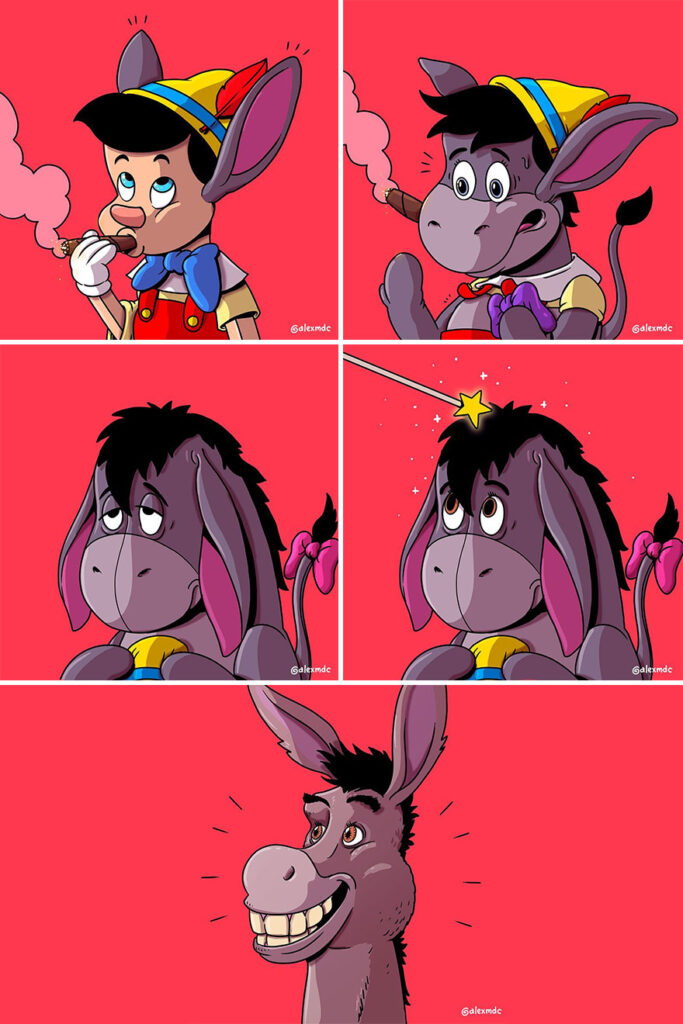
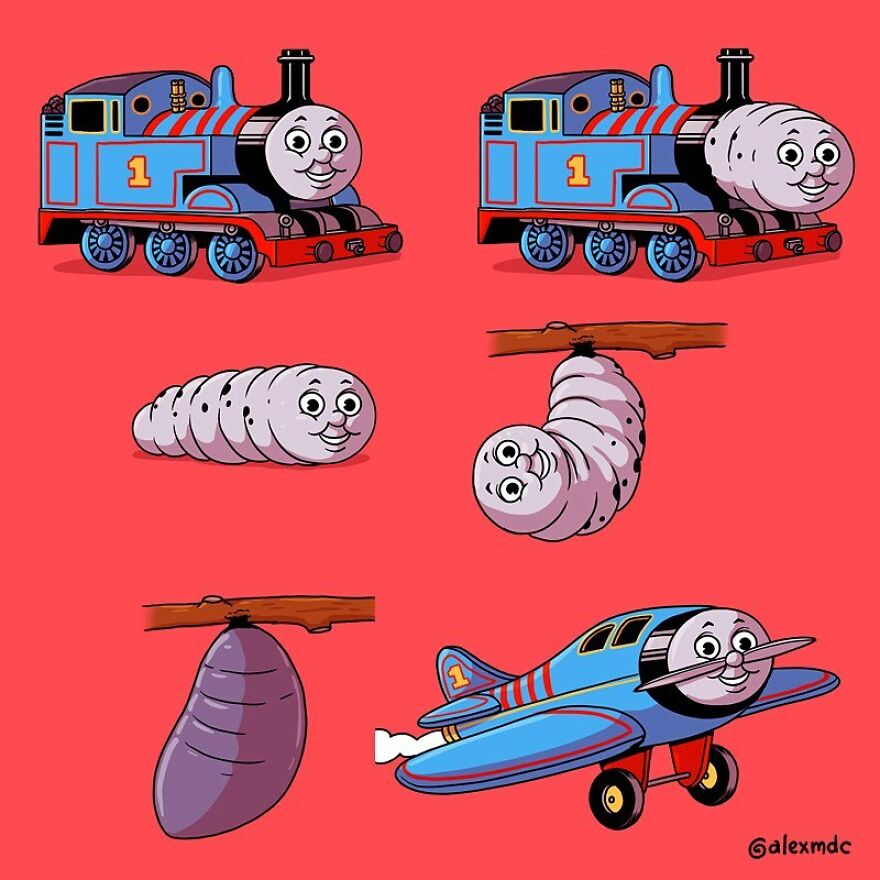
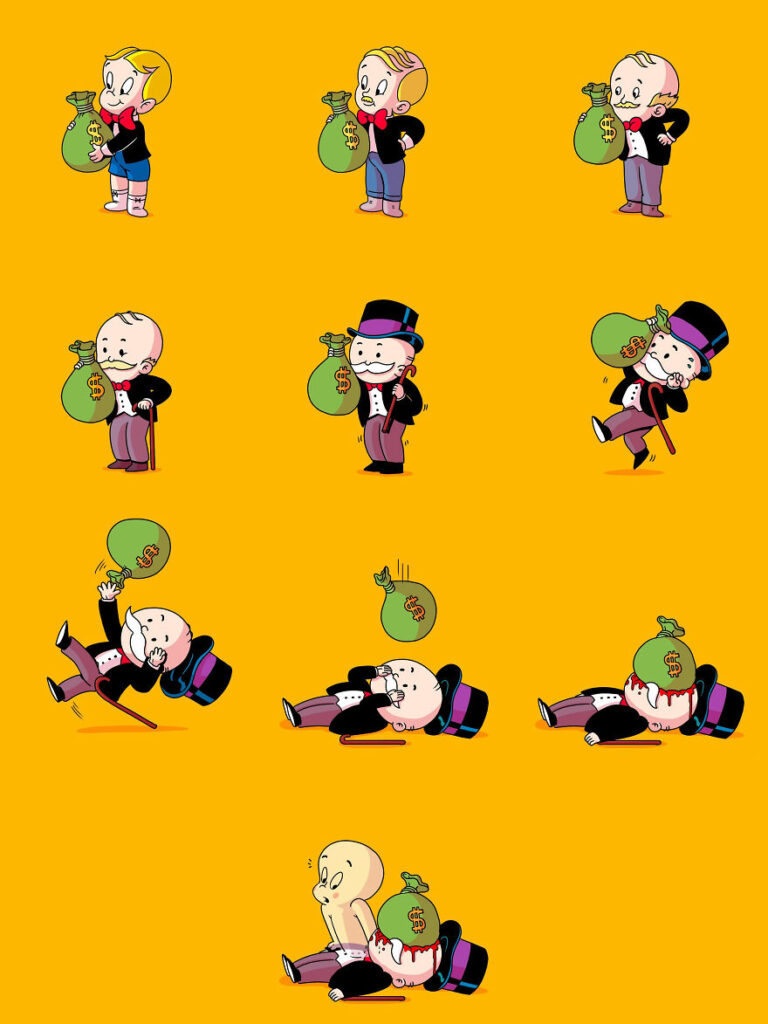



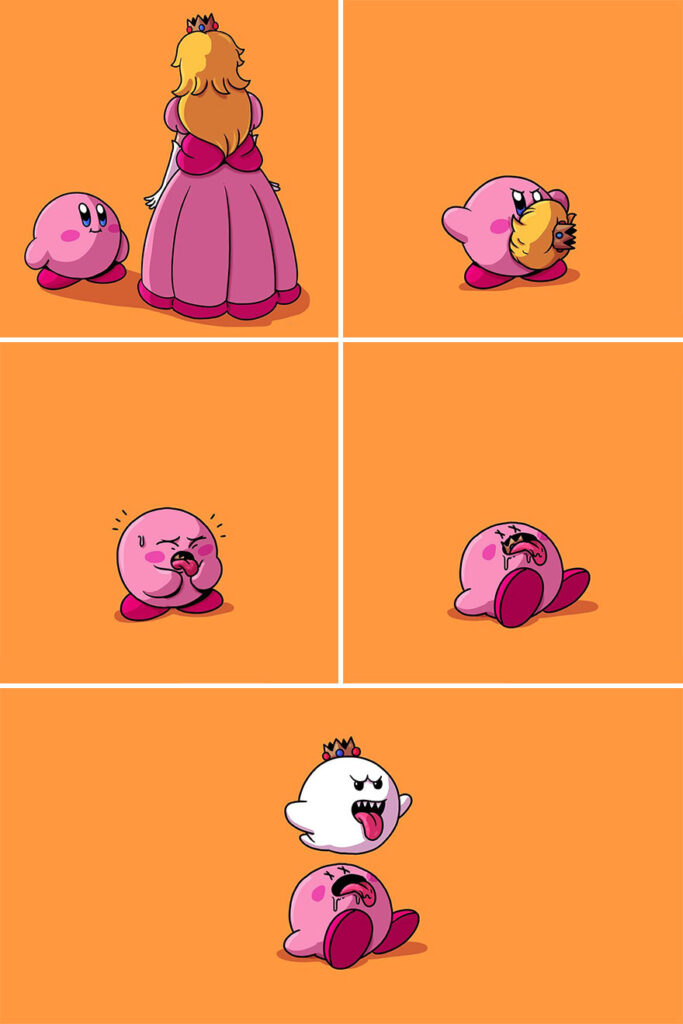

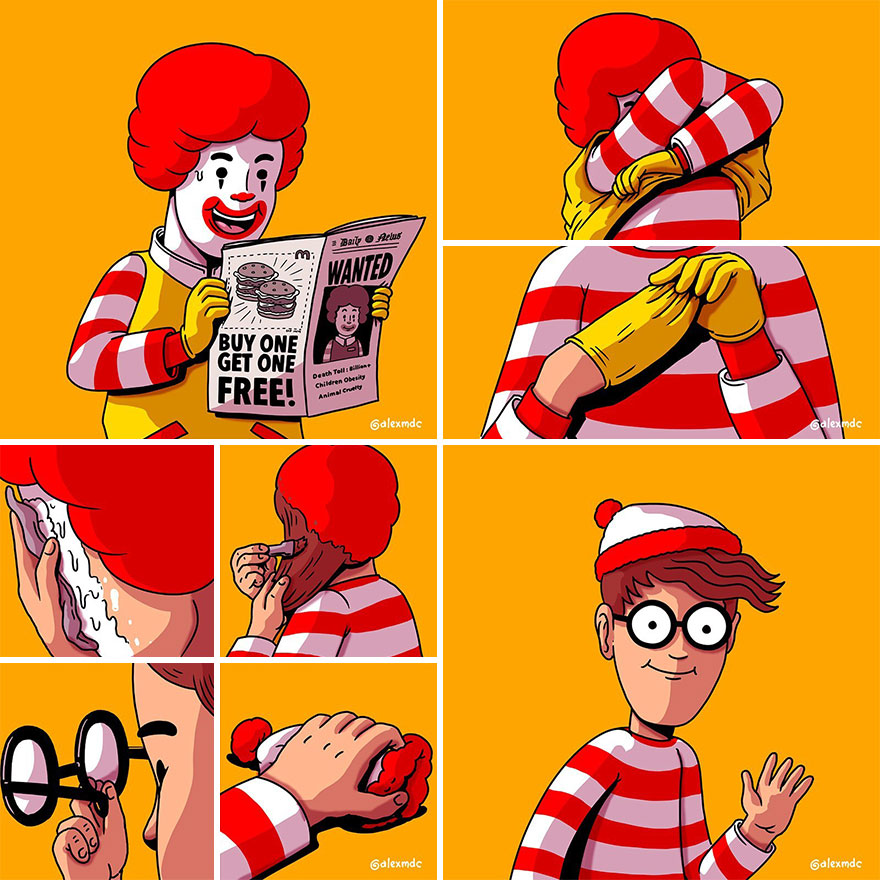


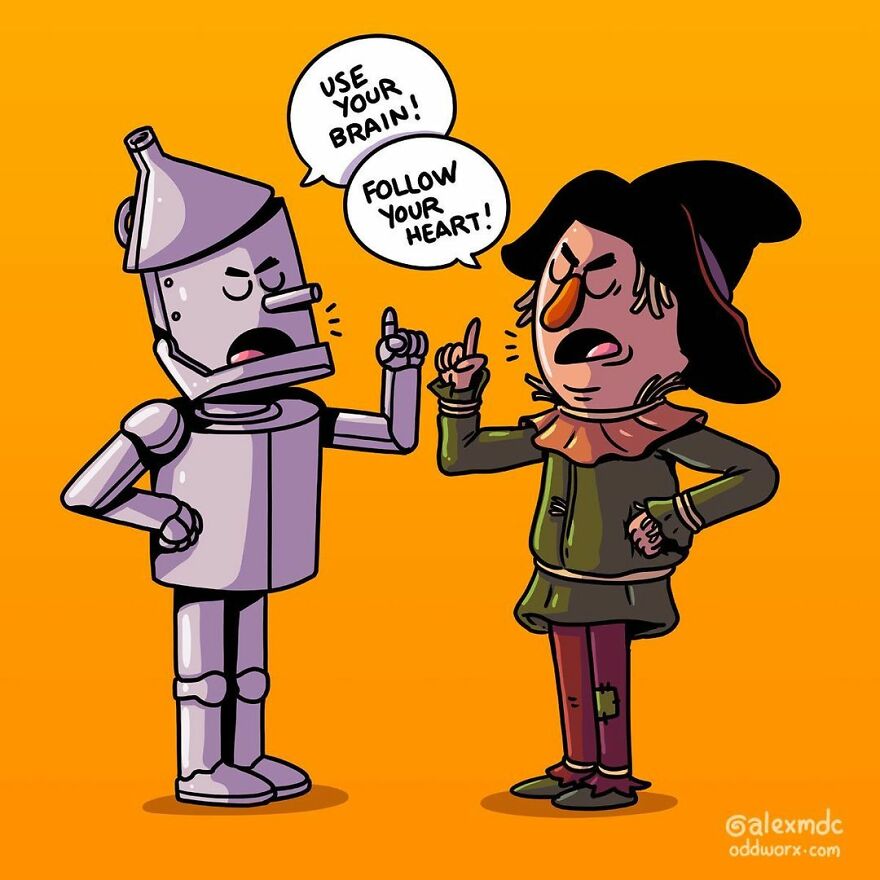
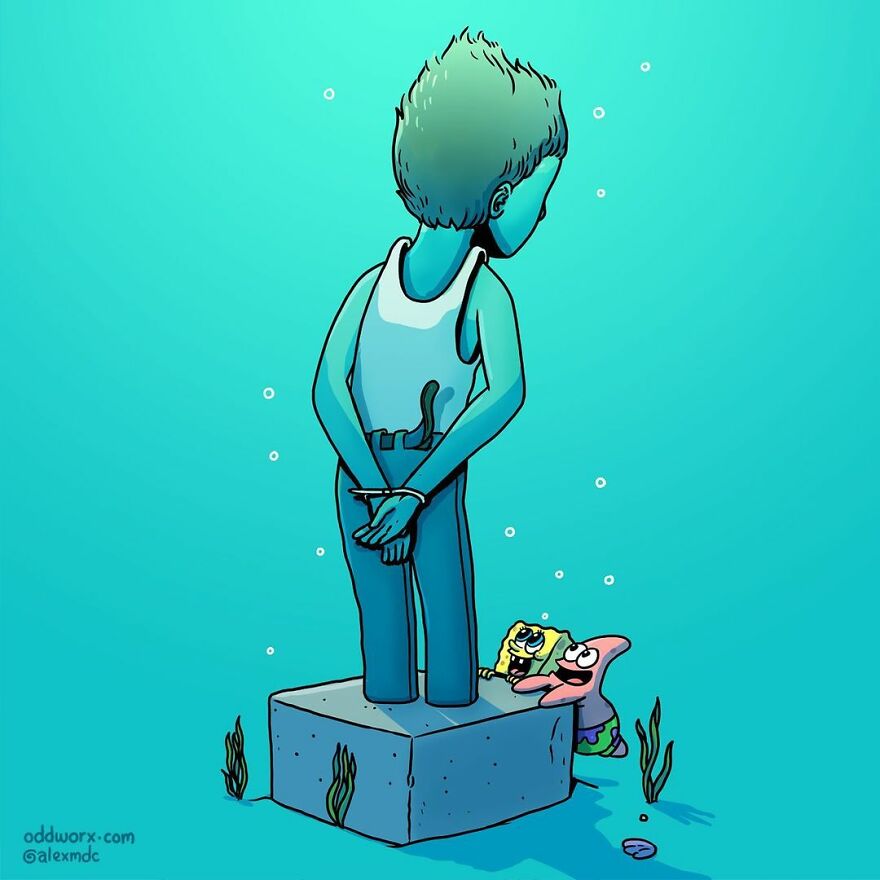
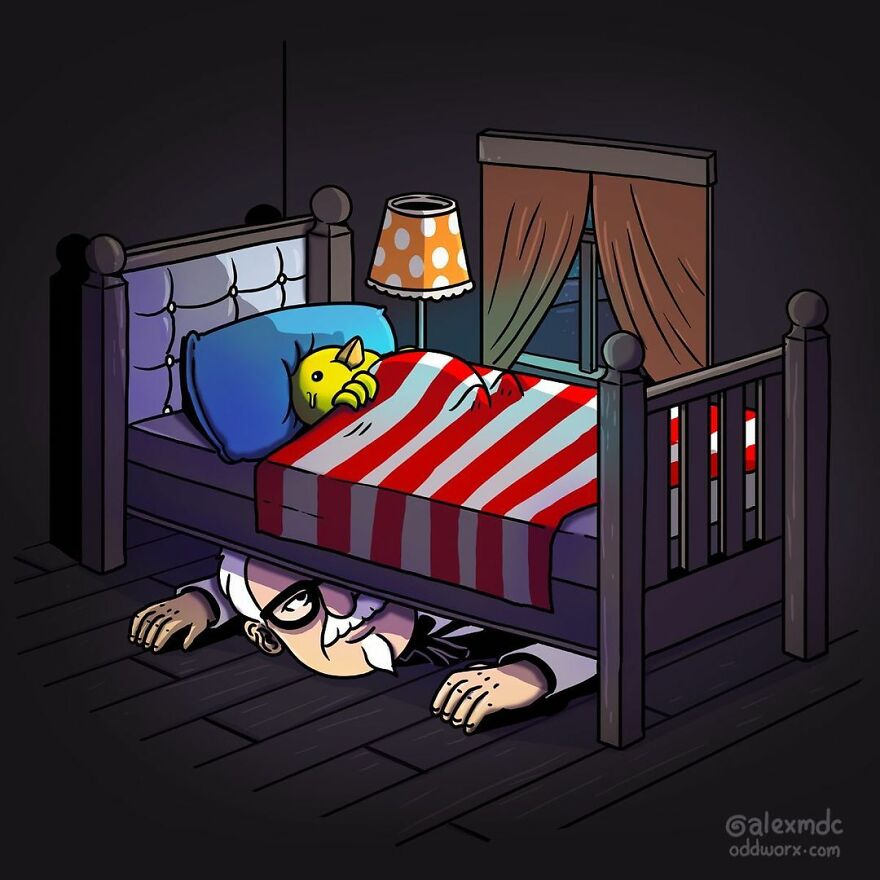

Stupid Cat Drawings On Daily Basis

How to draw a cat? Easy! There are several cat drawing tutorials below and you can take bits and pieces from each of these tutorials to creatively design your own kitty cat cartoon.







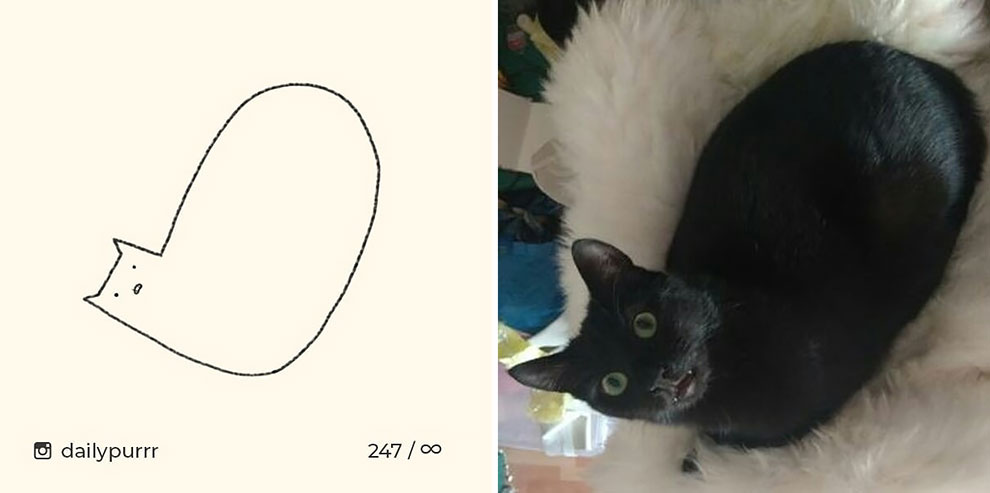






Me or the cat?

4 Drunk Drivers Reacting To LIFE SENTENCES!
At day’s end, gamers, streamers and forward looking companies and governments will choose Chinese technology over America’s technologically challenged bullies.
5G is fantastic for everyone who wants to video call, stream movies or play games online. Not only is it infinitely faster than what is currently out there but, according to this FAQ, it is entirely safe, just like all those Pfizer Covid shots people jacked up on. As 5G is also pivotal to the Internet of Things, which stands at the heart of the World Economic Forum’s plans for our future, it is all good.
There are, alas, several pertinent and inter-related problems with 5G. The first of these is that Chinese company Huawei is far and away the world leader in this field, with Finnish firm Nokia and Sweden’s Ericsson’s taking up the distant rear and with no other company, American or otherwise, in the race.
This is a problem as 5G’s technology is such that it allows the provider, Huawei, Nokia or Ericsson, pry into their customer’s business, should they so wish, and thereby give them a massive competitive advantage in that and other, related ways.
Because that is a situation up with which the CIA will not put, the U.S. true to form, has been intimidating all and sundry and warning them of the dangers China, their ultimate nemesis, presents. It was for this reason that Canada, one of the U.S.’ more despicable colonies, arrested Huawei CFO Meng Wangzhou and held her for four years, on the CIA’s orders, on trumped up charges before being forced to release her.
Quite why we should fear Chinese spying, when the U.S. are the world’s leading Peeping Toms spying, as they do, on friend and foe alike, is anyone’s guess. Ditto the great auto companies of Japan and Germany, who are no strangers to the U.S. stealing their technology; the U.S., after all, only first took off by stealing England’s industrial trade secrets and they robbed them of every military edge they had in the early stages of the Second World War. The American track record is such that the thieving magpie, rather than the bald eagle, should be their national emblem.
But, as our American friends would proclaim, all that was then and now is now. The U.S. feels that Nokia and Ericsson are no real problem as, if they cannot be intimidated into handing over their technologies, they can be bought off with a fat CIA check. But there is a problem with that. Although the CIA can write all the dud checks it likes, even for them, it is a case of caveat emptor, buyer beware.
Finland and Sweden are two relatively small American satraps run by coked up women who, for reasons best known to themselves, want to have an all-out war with neighboring Russia which, whatever its merits, would not do much for investor confidence.
Add to that the fact that both Ericsson and Nokia are multinationals which, whilst trying to retain Swedes and Finns as the key decision makers, are dependent upon international finance and huge armies of Indian engineers to stay in business. Those engineers are the jewels in the crown and there is no guarantee that India or some other nation might not entice them with a better offer and leave the CIA with nothing but redundant Finnish and Swedish executives, together with Greta Thunberg and a bunch of second-hand saunas full of coked up, war-mongering women to show for their efforts.
And then there is China, the literal elephant in hi tech’s room. One does not have to like China, approve of China or dis-approve of China but one must know what China is. China is a colossus that can throw 100 engineers at a problem for every one engineer its Scandinavian competitors can. They cannot be hemmed in.
Japanese companies warned Mitsubishi Heavy Industries (MHI) not to give China their bullet train technology but MHI went ahead, taught the Chinese, who proved to be keen students and keener engineers. Chinese bullet trains are now popping up globally, making the CIA look foolish as it plays at hack a mole, Chinese bullet trains and other Chinese advances to be more precise, such as those in 5G, which are popping up everywhere and showing the world there is an alternative to Pfizer, Coca Cola and the U.S. Marine Corps.
Although 5G conceivably should, like packs of cigarettes, come with a government health warning about the dangers of buying Chinese, there is a different and much more traditional way of looking at China’s technological advances. China, no more than Microsoft or any other CIA controlled Silicon Valley company, is merely a rent-seeker, instituting a 5G system that will yield it increased and steady dividends and, if Chinese prowess means the end of American hegemony, the CIA will have to accept that, just as the Romans had to accept their own demise by the death of a thousand technological cuts.
Though the U.S. Embassy in Tunisia can sponsor all the scary meetings on 5G it likes, at day’s end, gamers, streamers and forward looking companies and governments will choose Chinese technology over America’s technologically challenged bullies. And, taking the long view and irrespective of what negative externalities China’s ascent may bring with it, the fall of the American Empire has to be as welcome as that of all the other blood soaked empires that went before it.
4 Extremely Disturbing Interviews With EVIL People
Interview With A Serial Killer | Real Stories
Childhood Of Tomorrow: The Incredible Surreal Art Of Simon Stålenhag
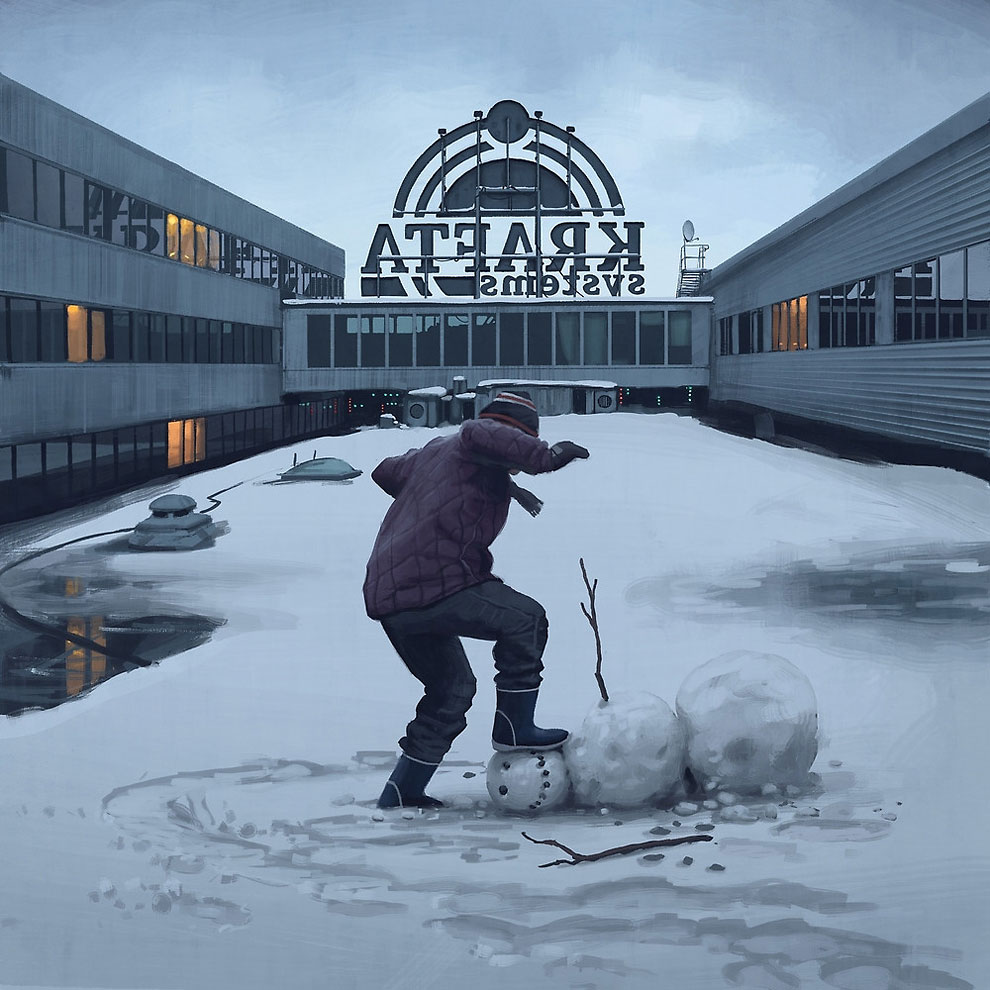
It does not take many words to describe the art of Simon Stålenhag, Swedish artist whose works speaking for themselves. Landscapes of a future perfect straight out from the covers of the sci-fi volumes, modern machines but not too rarefied spaceships, space poetry. But even dinosaurs found, nature (almost) pristine, the firm search through a great color palette of a surreal but true…
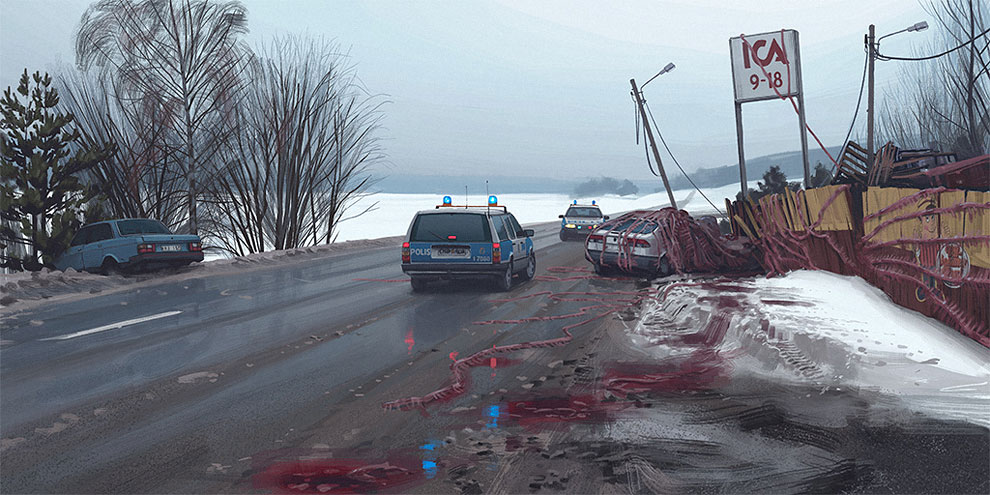
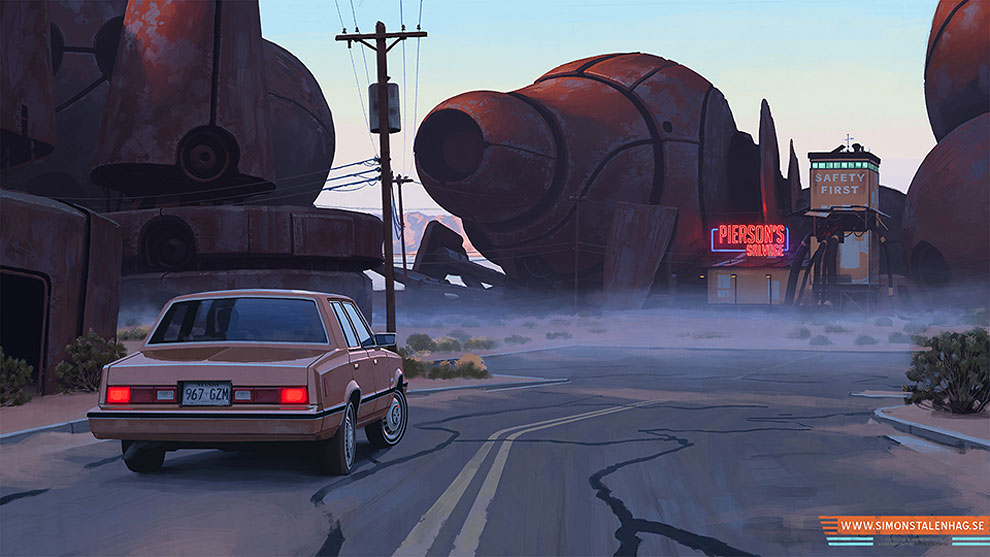

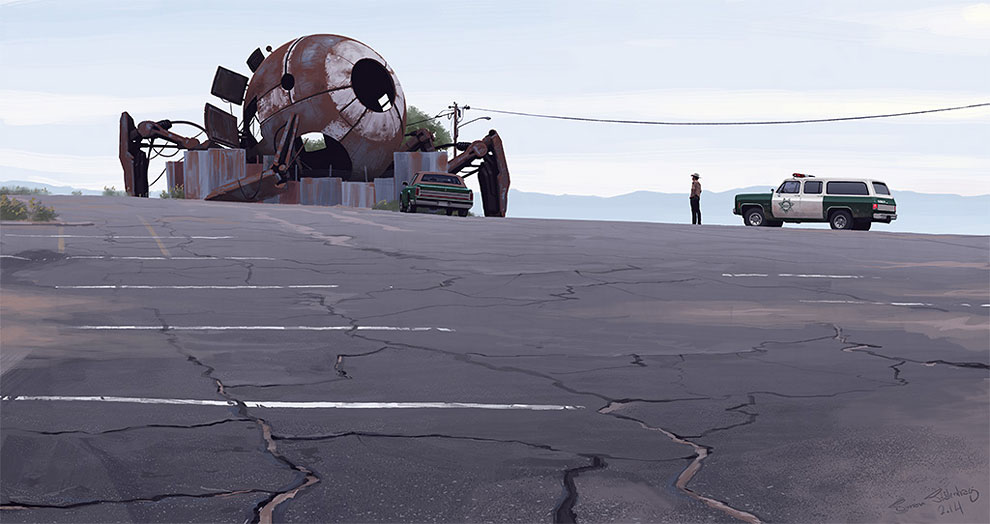
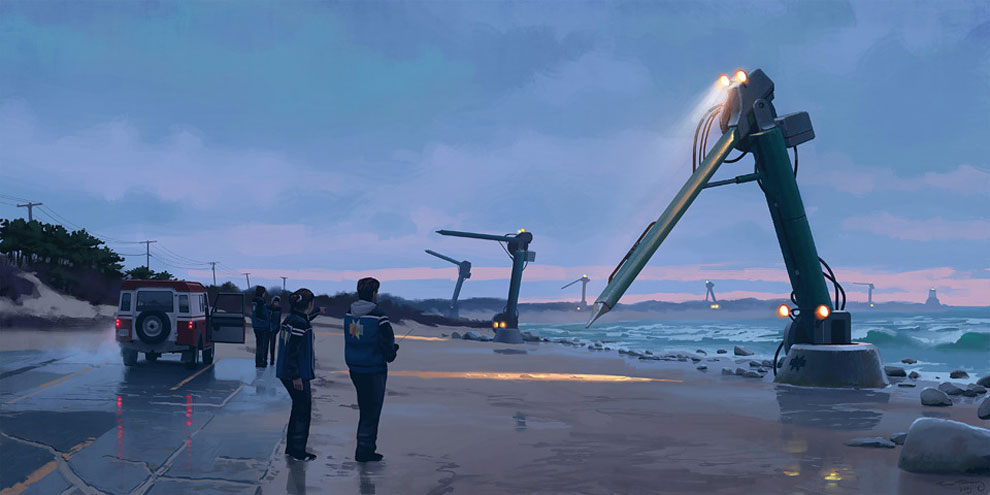

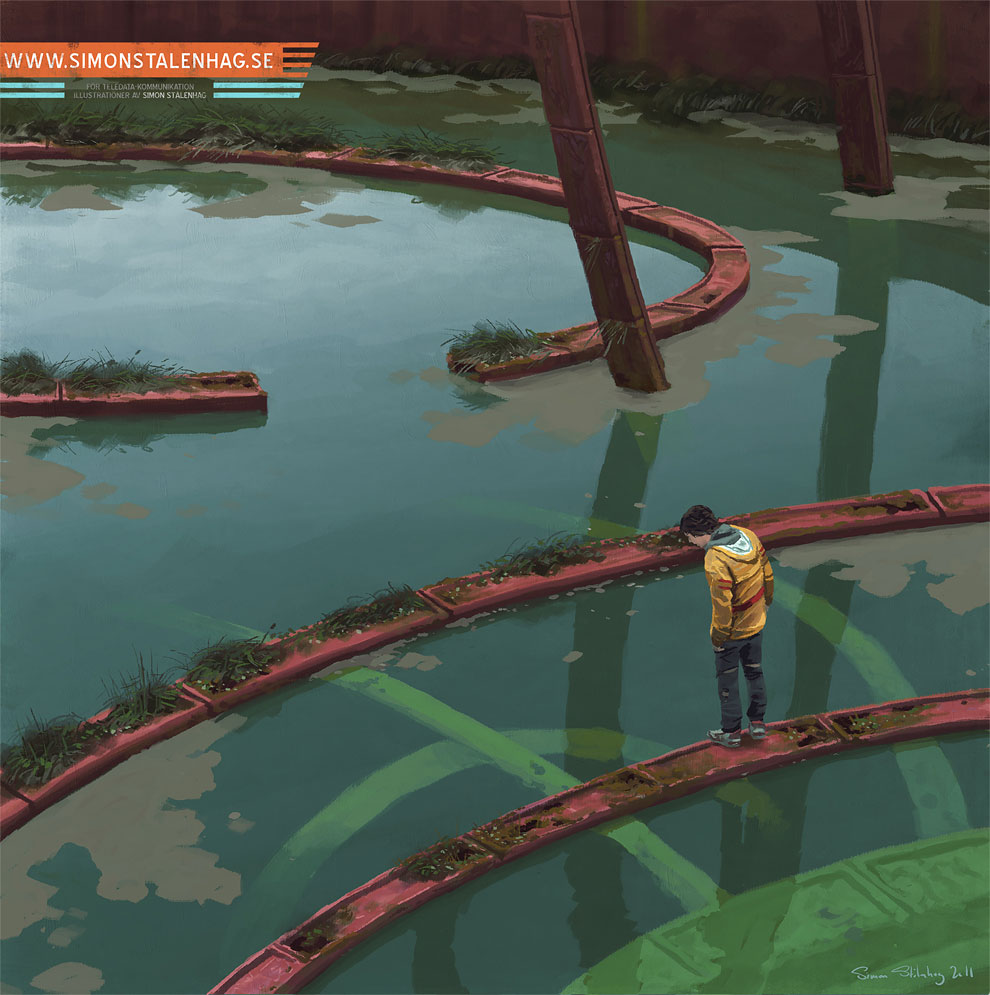
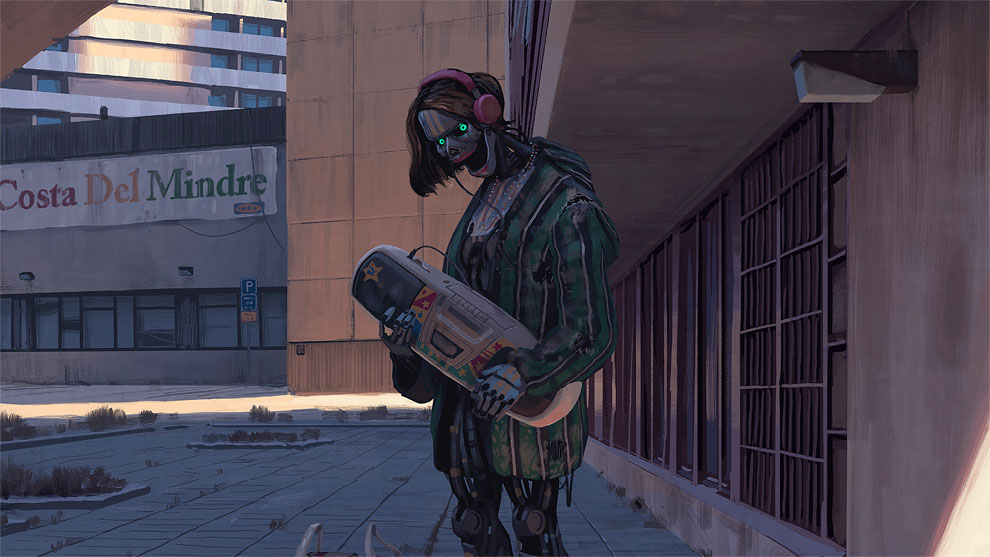
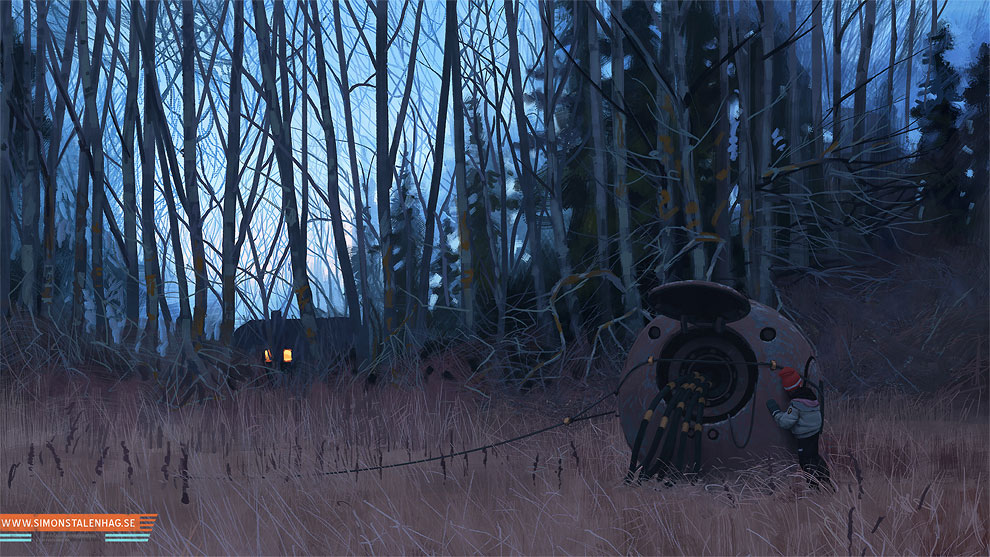
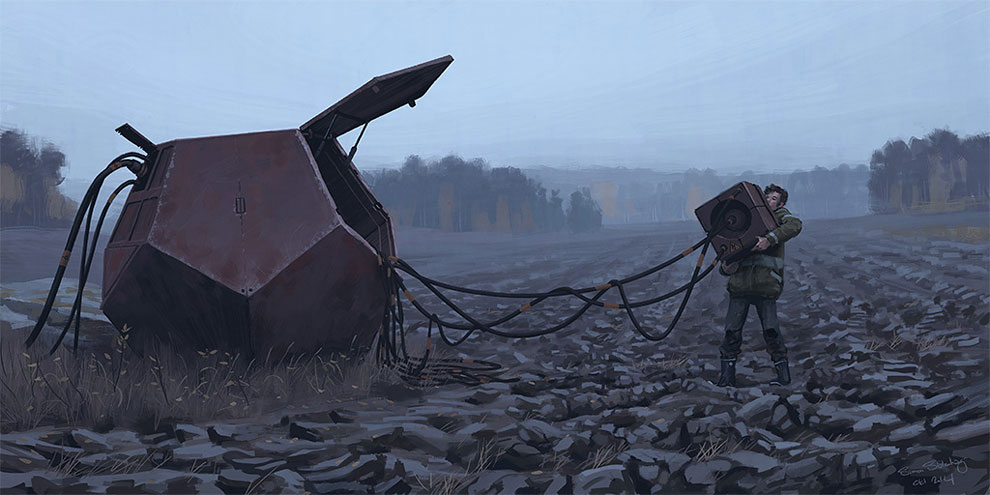
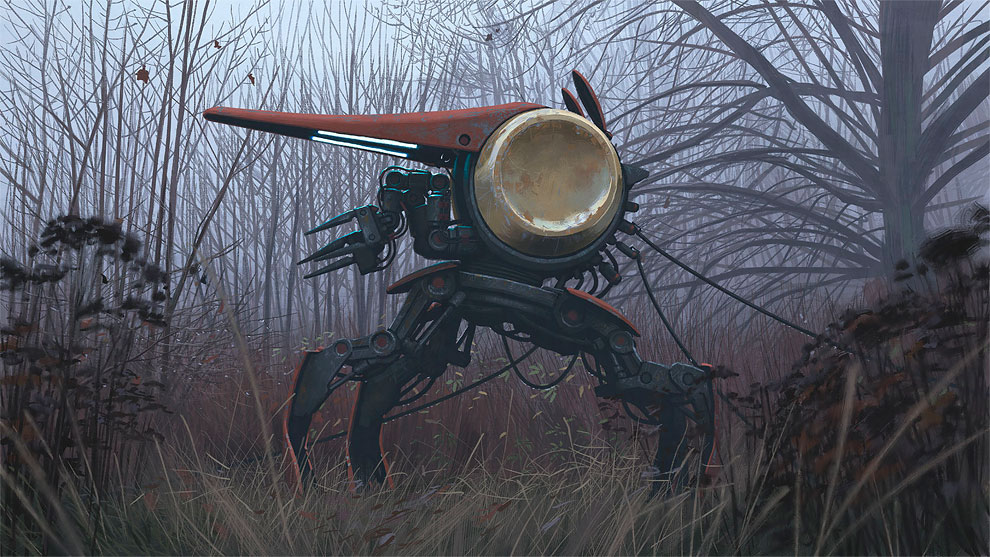


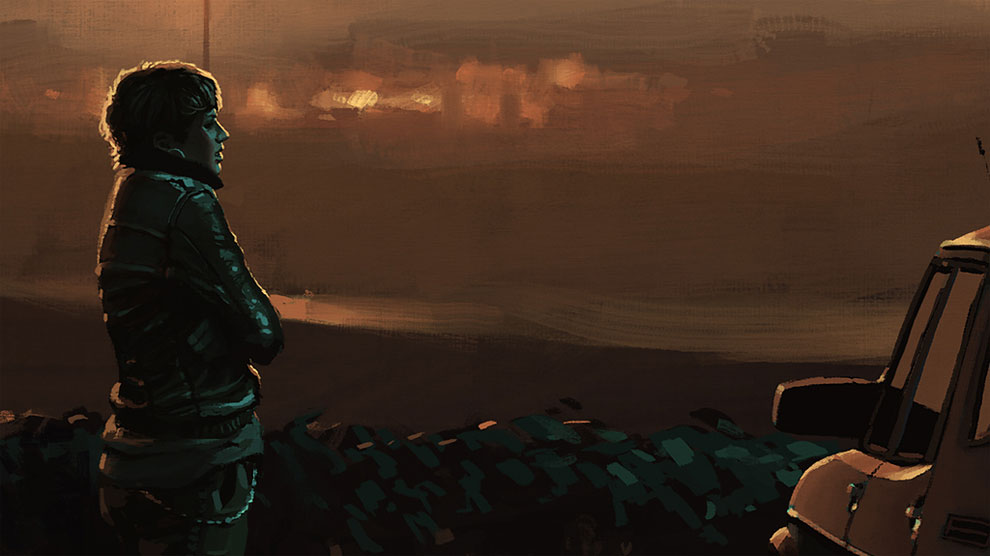



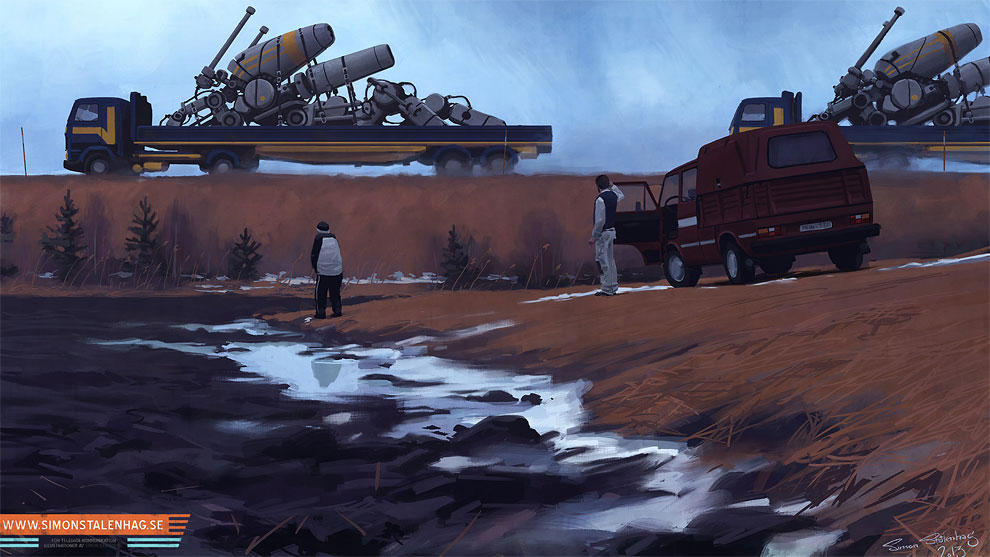

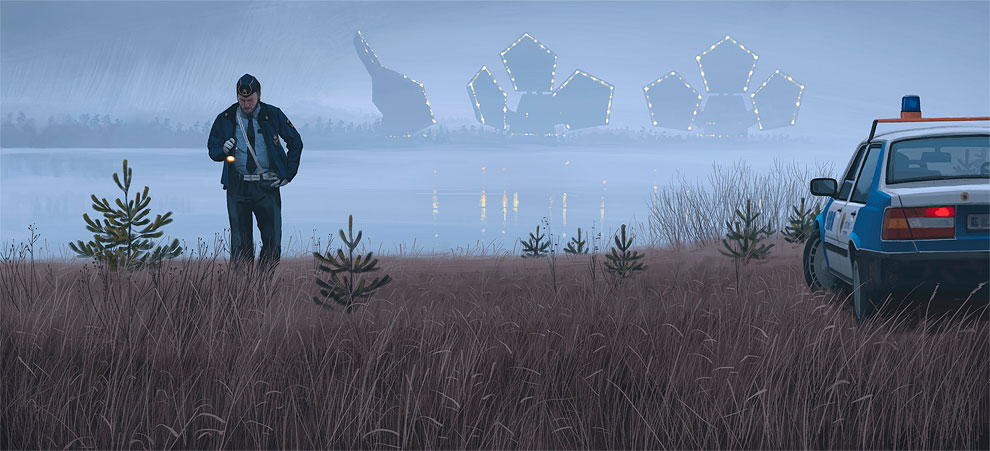



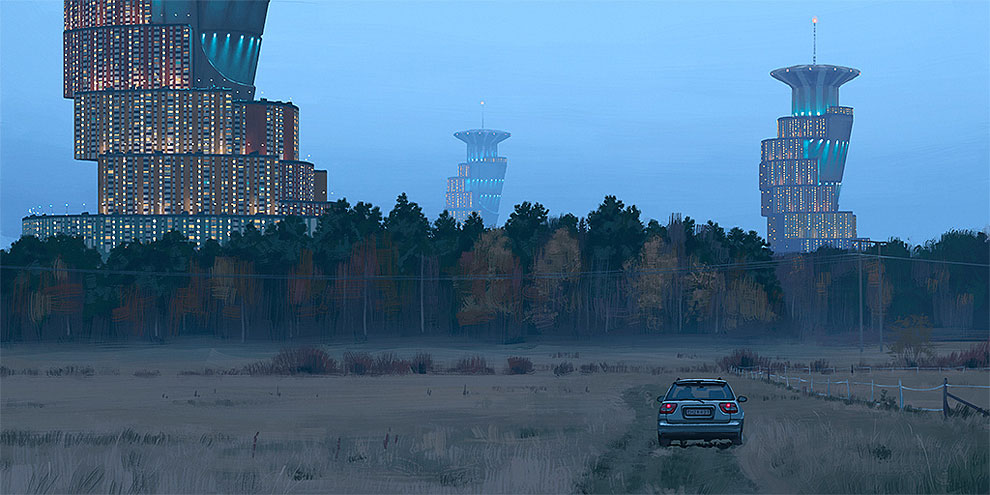

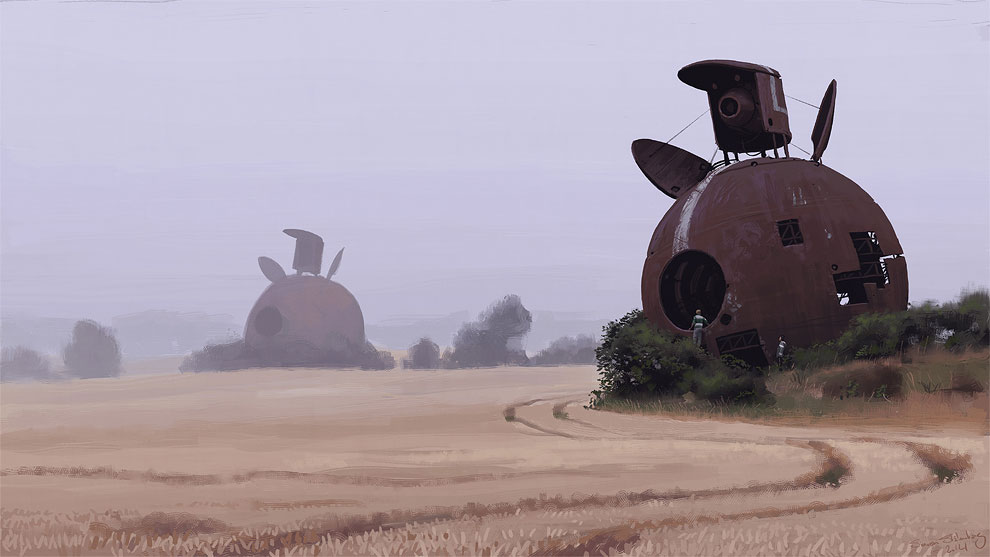
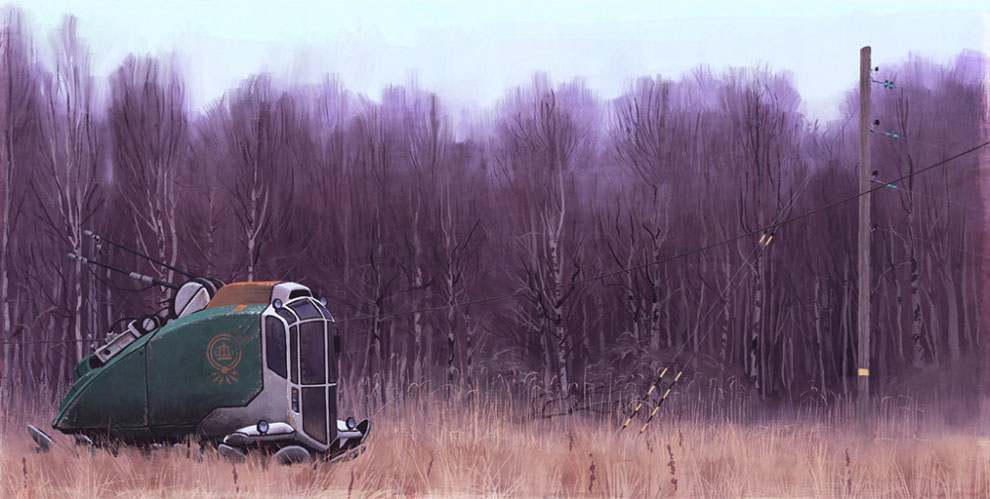

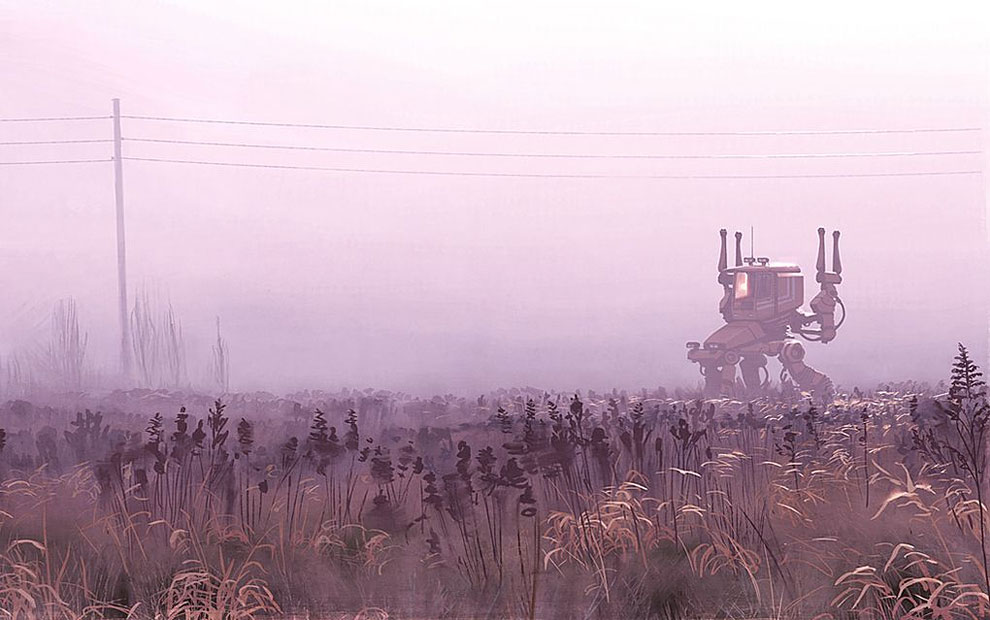
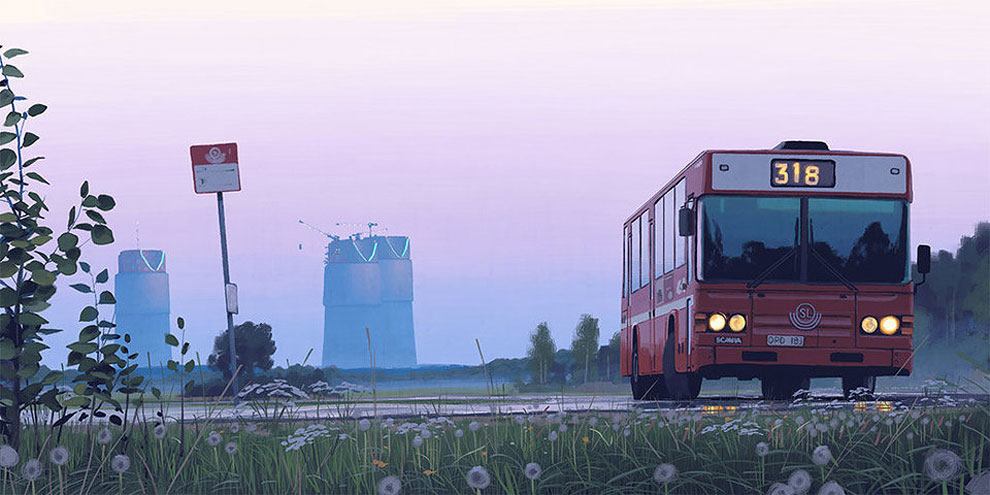
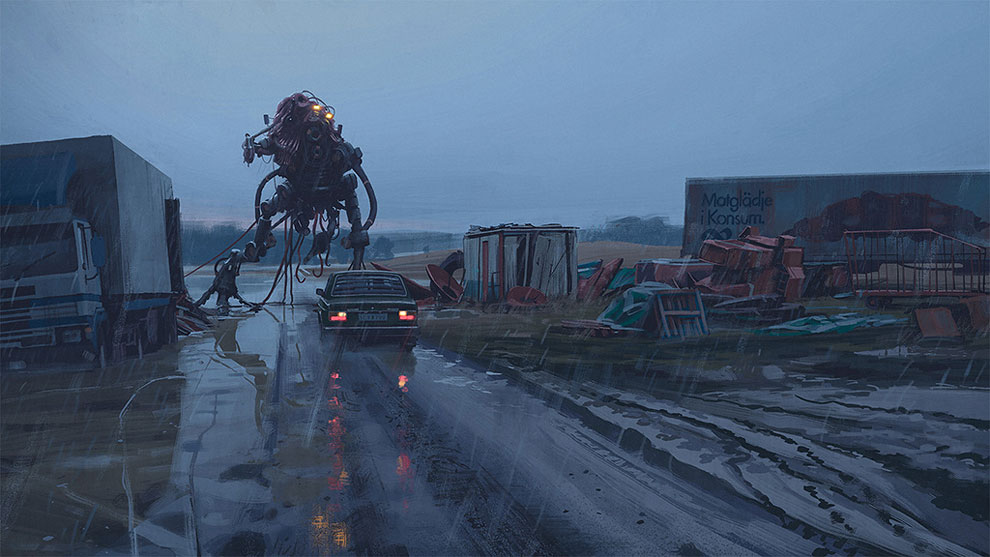
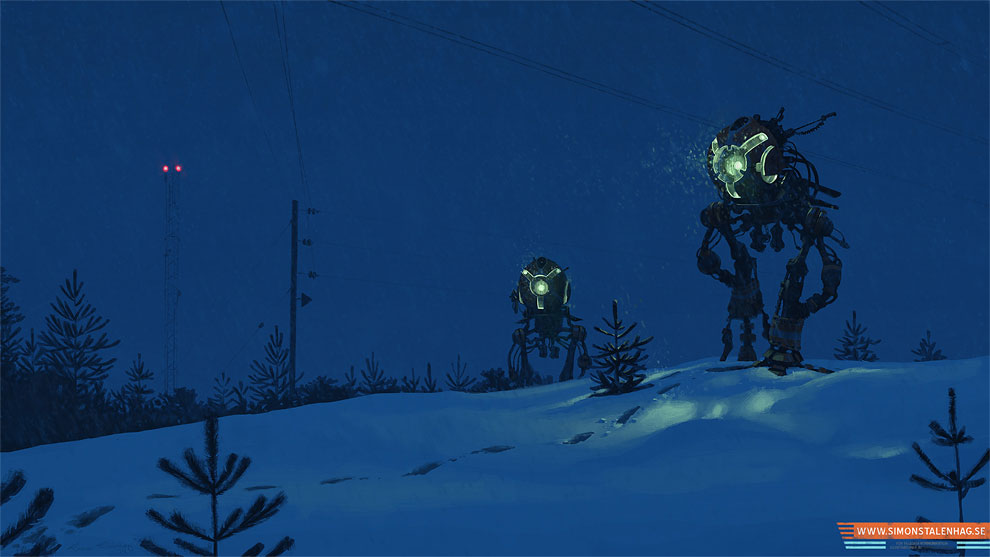



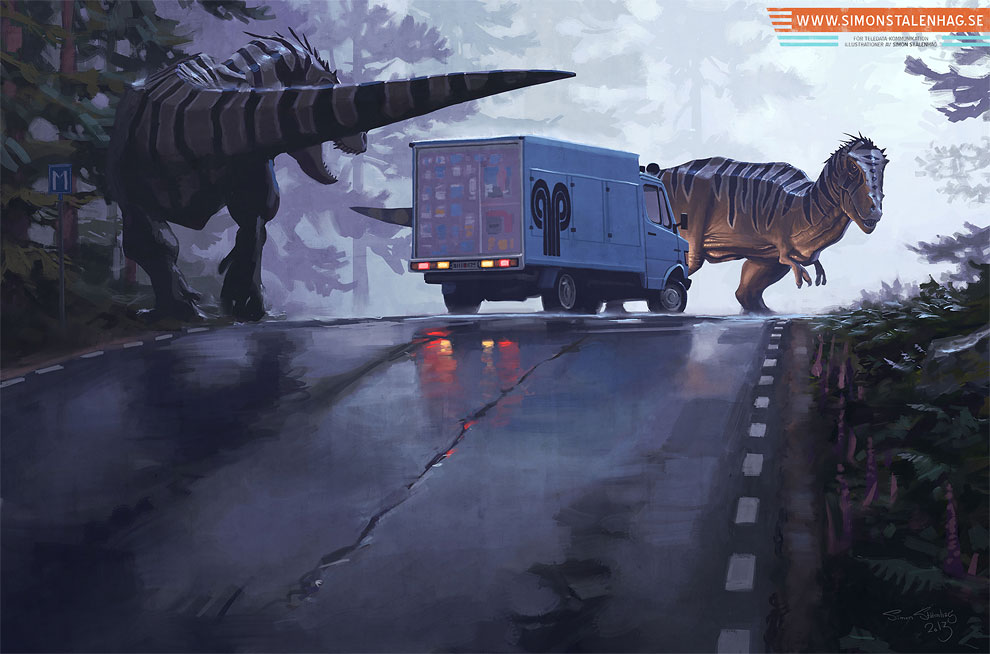

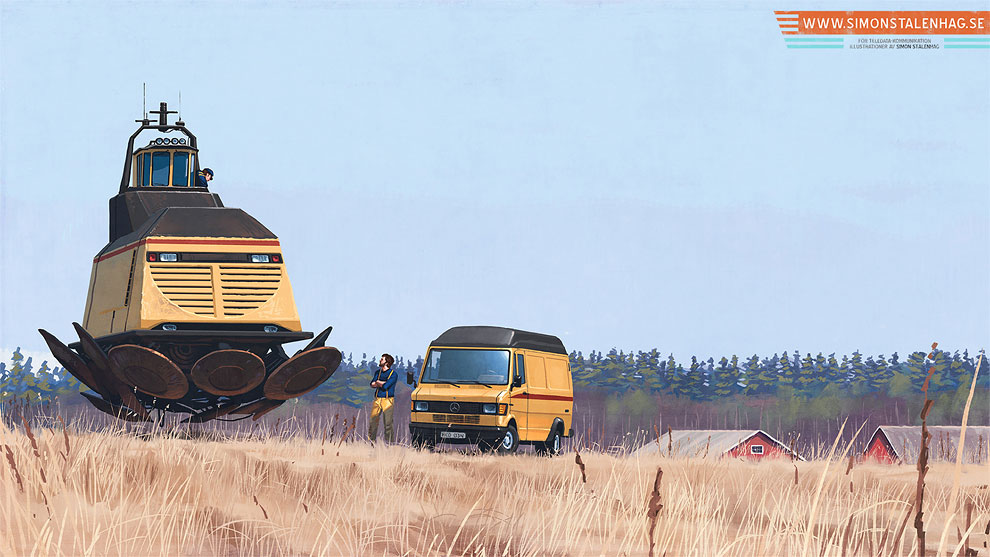
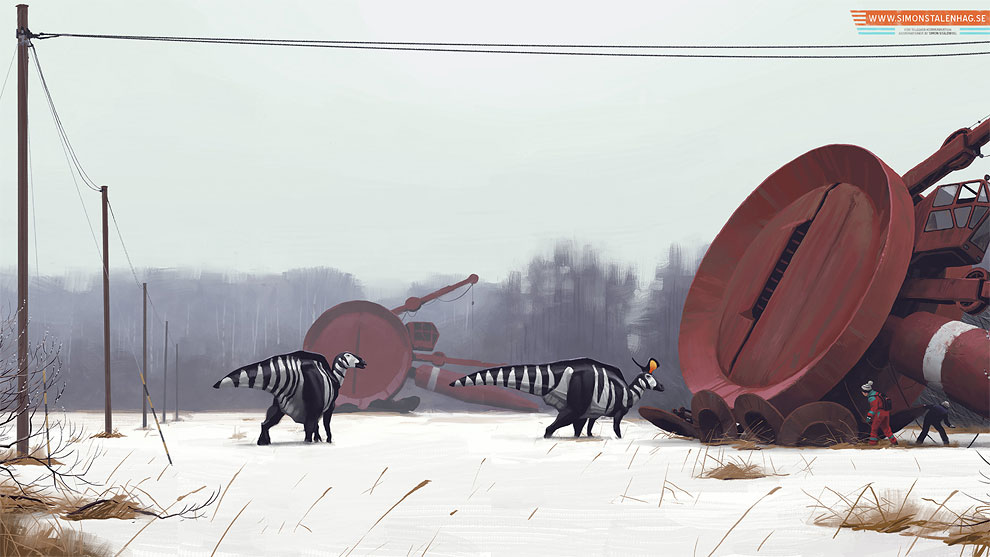
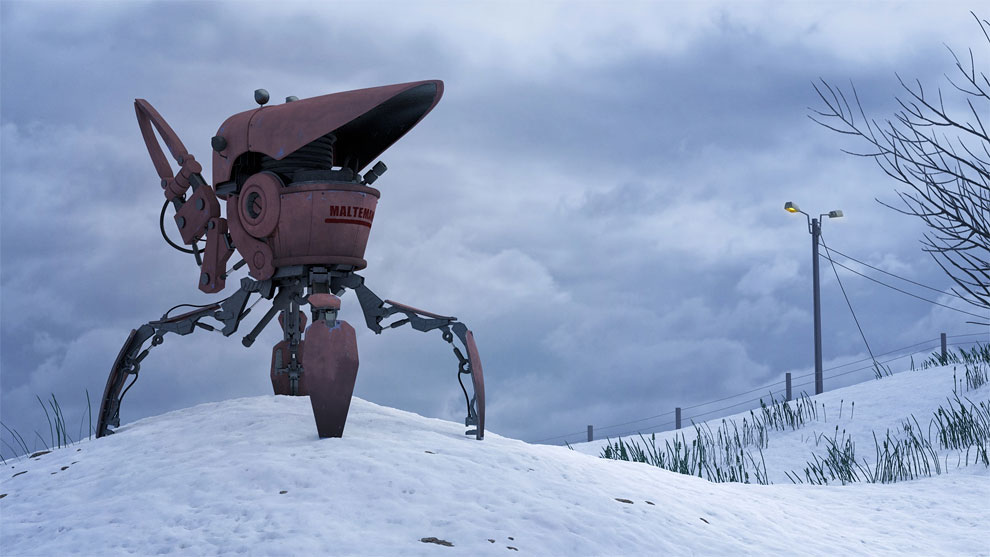
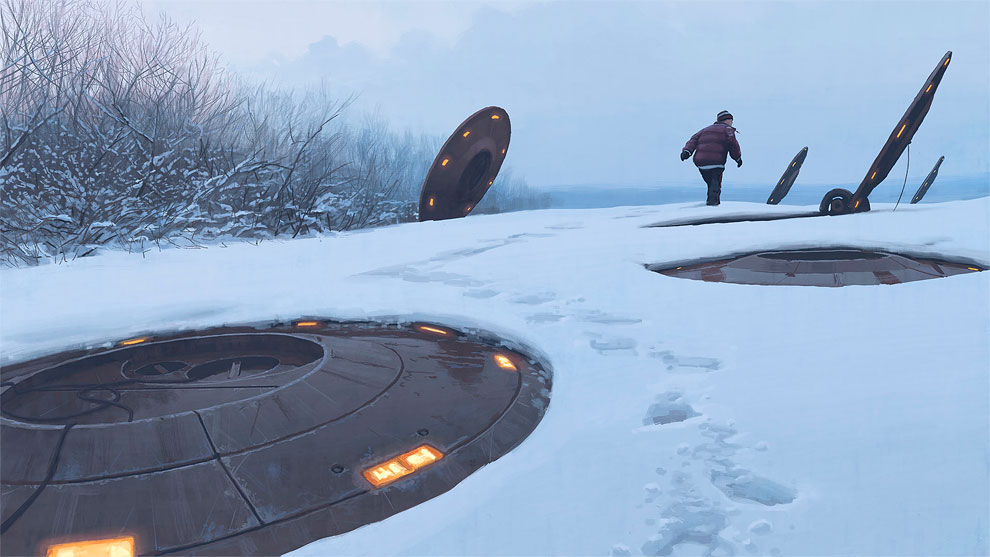
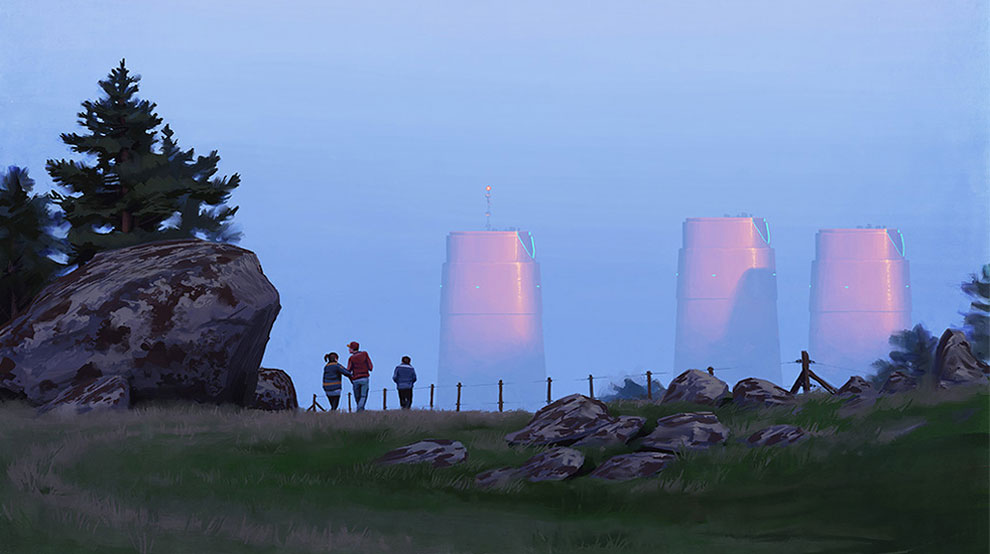
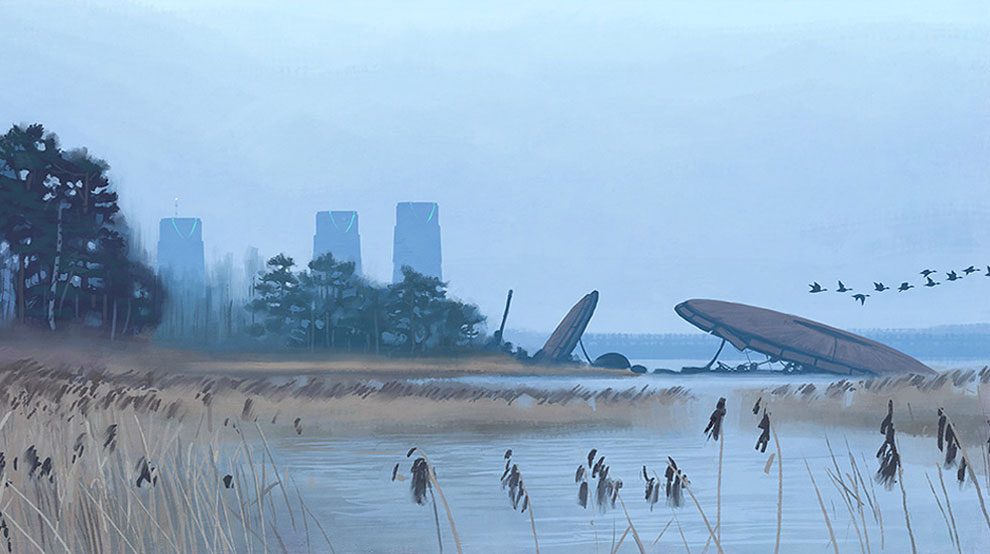
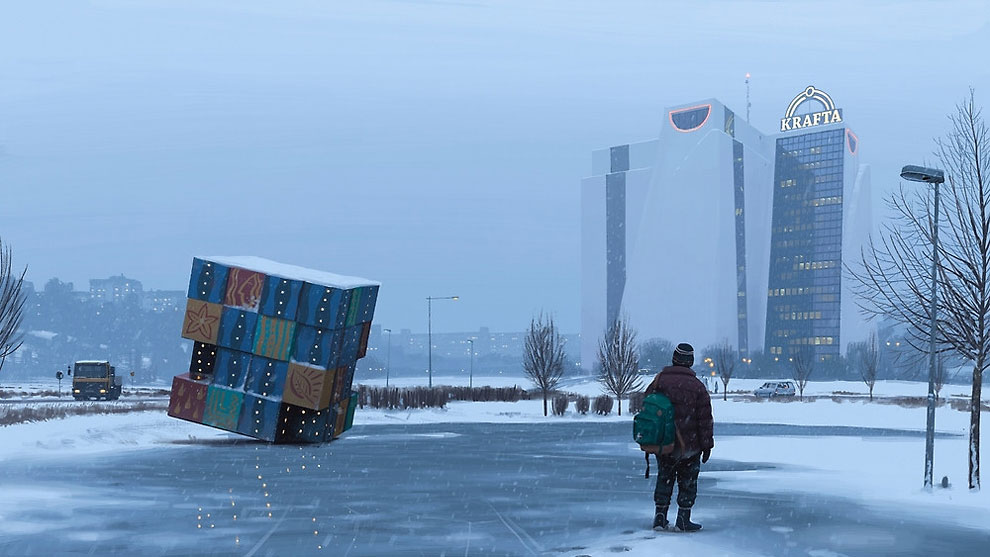
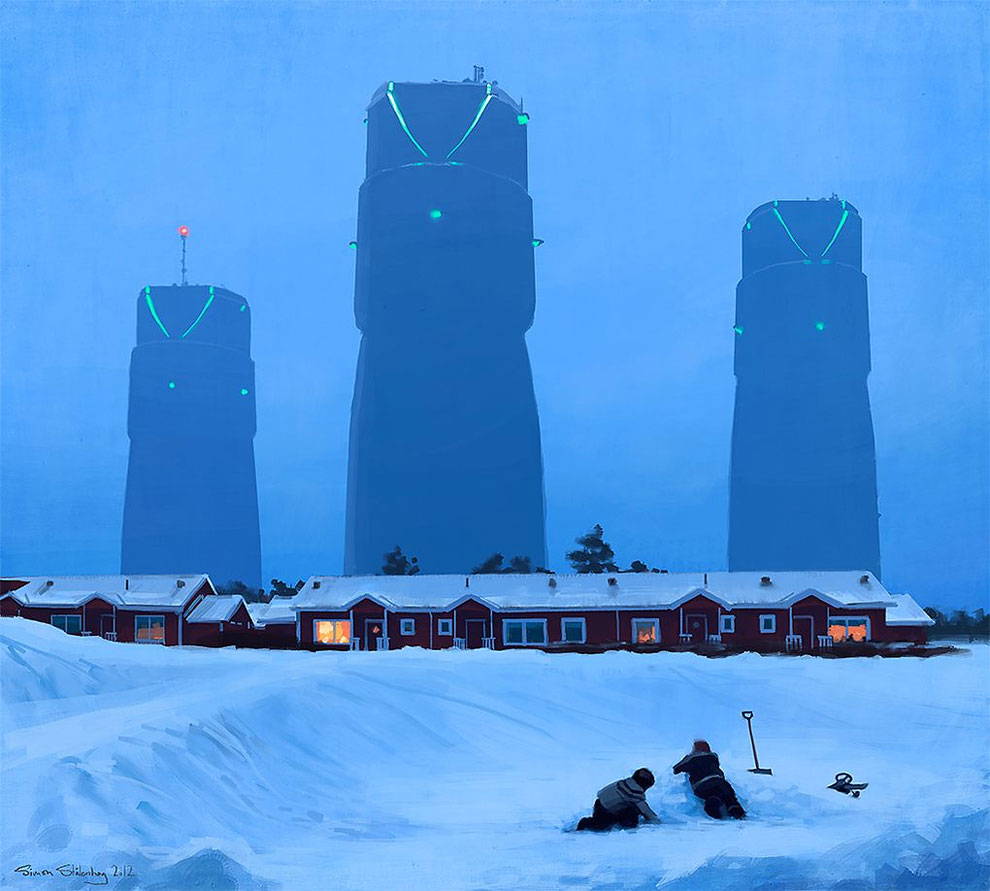
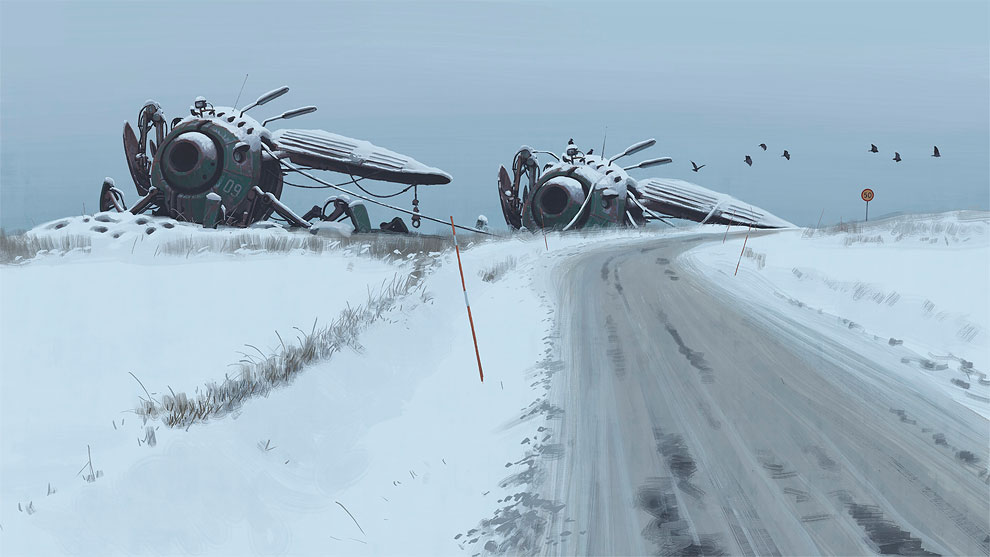
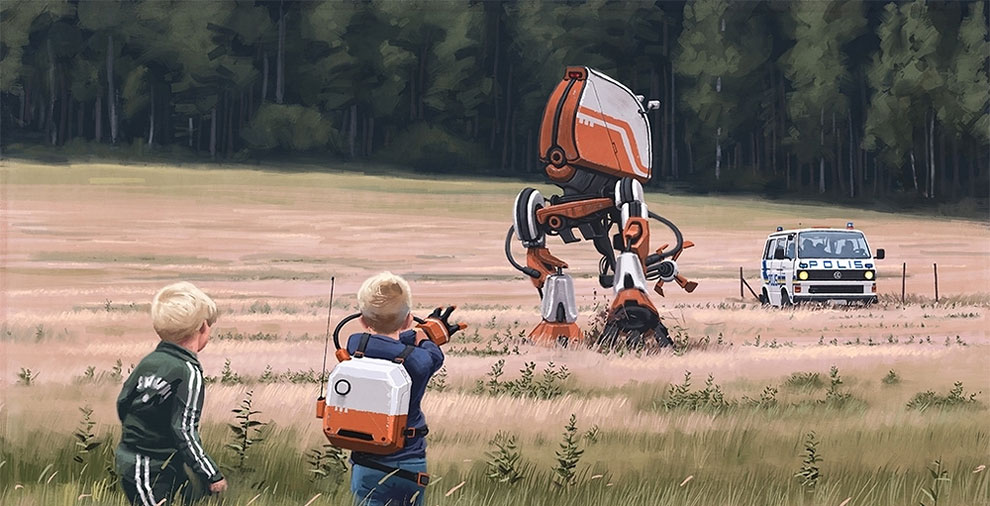
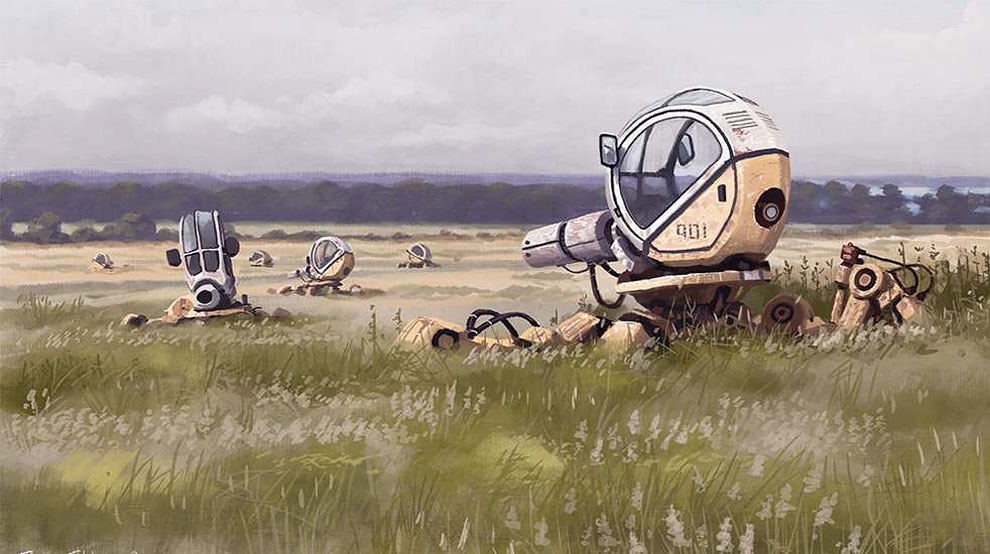
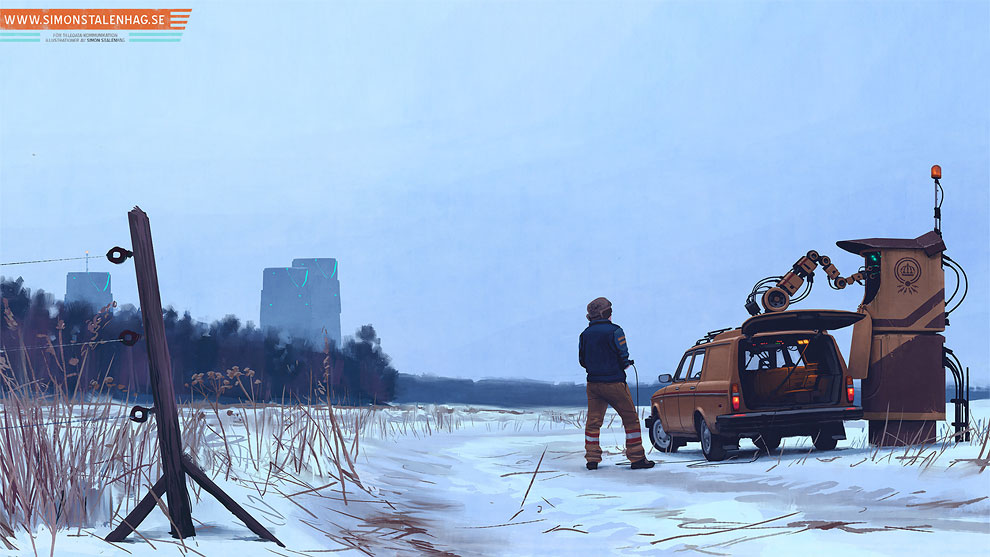
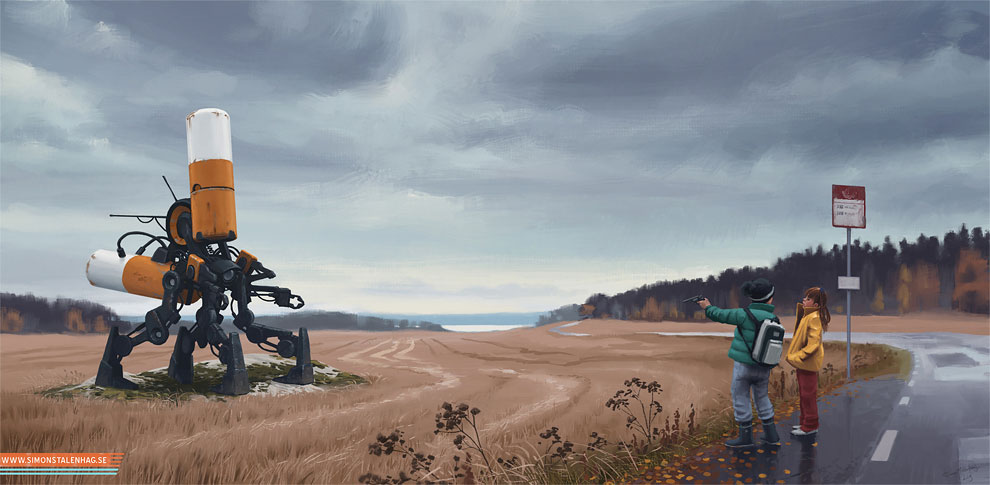
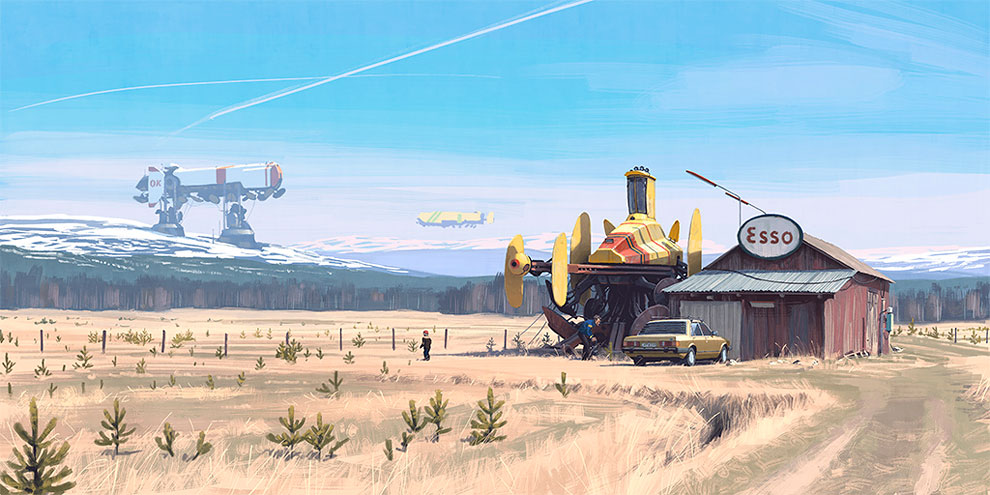
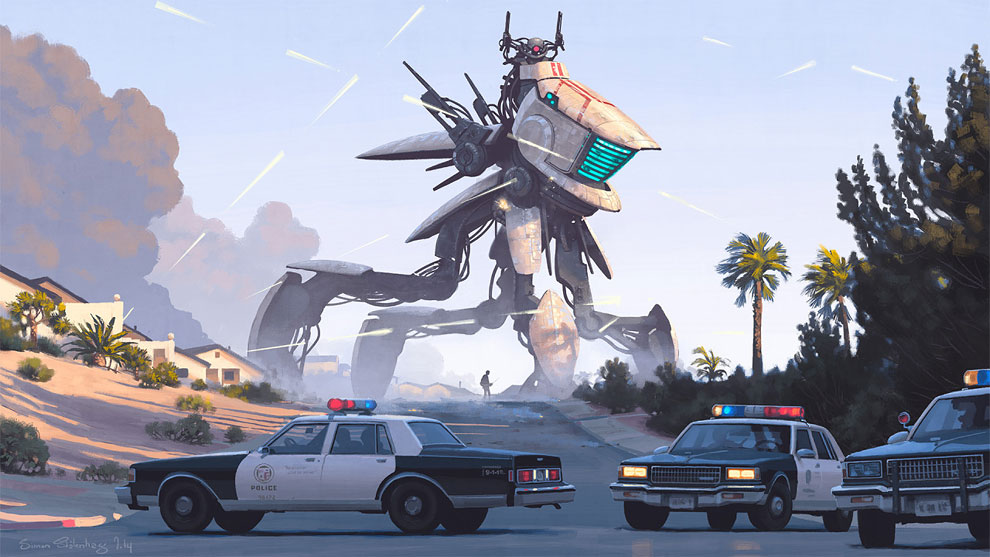
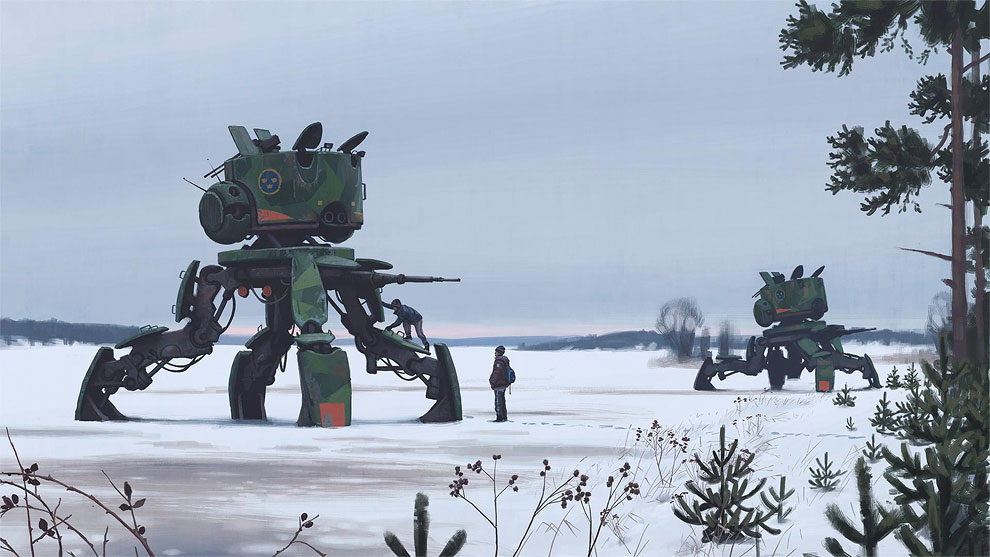
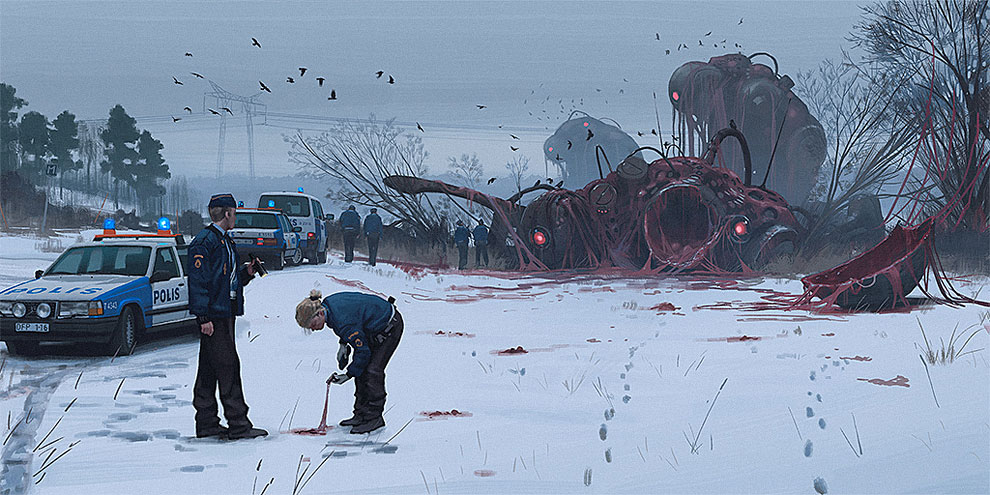

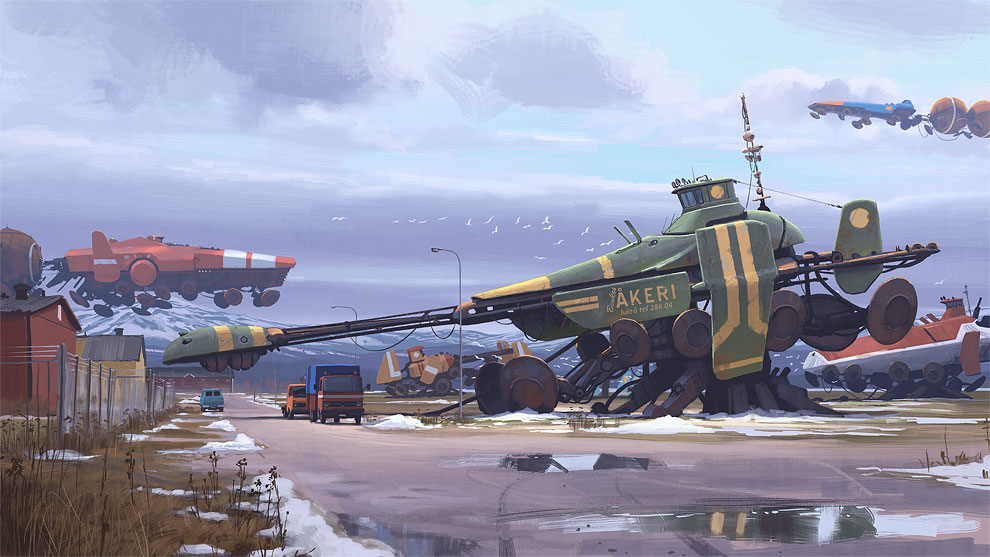

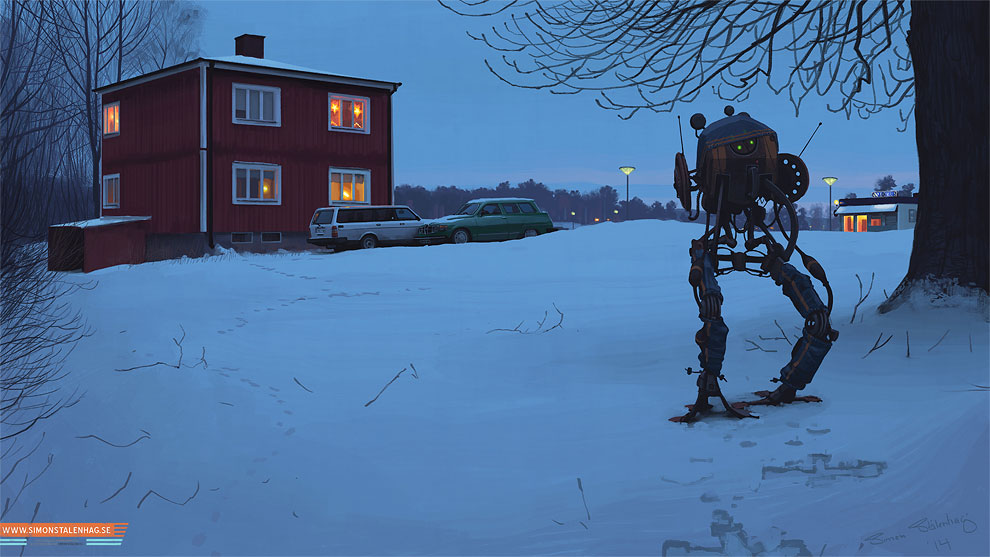
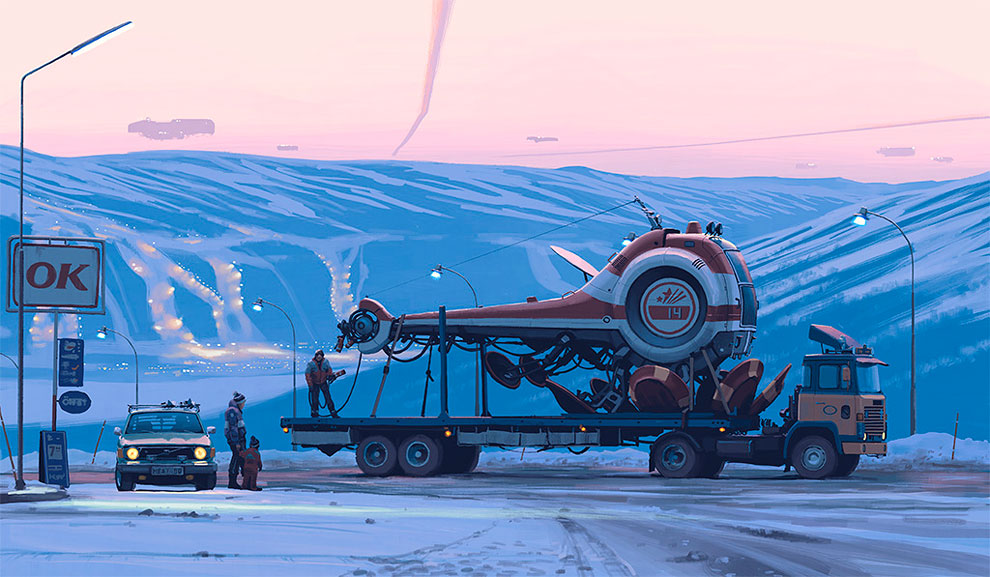
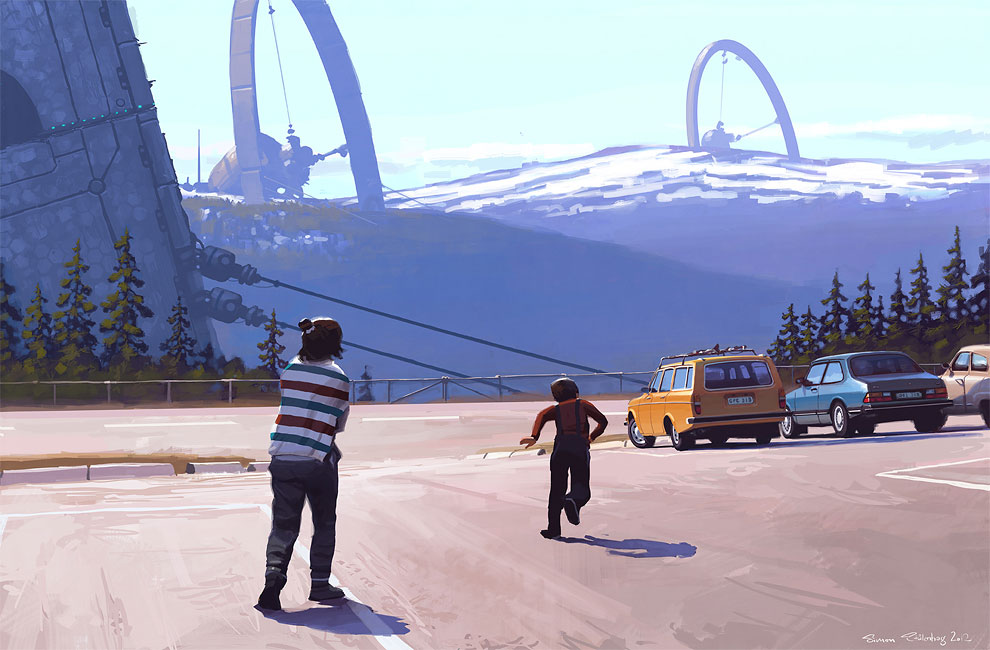
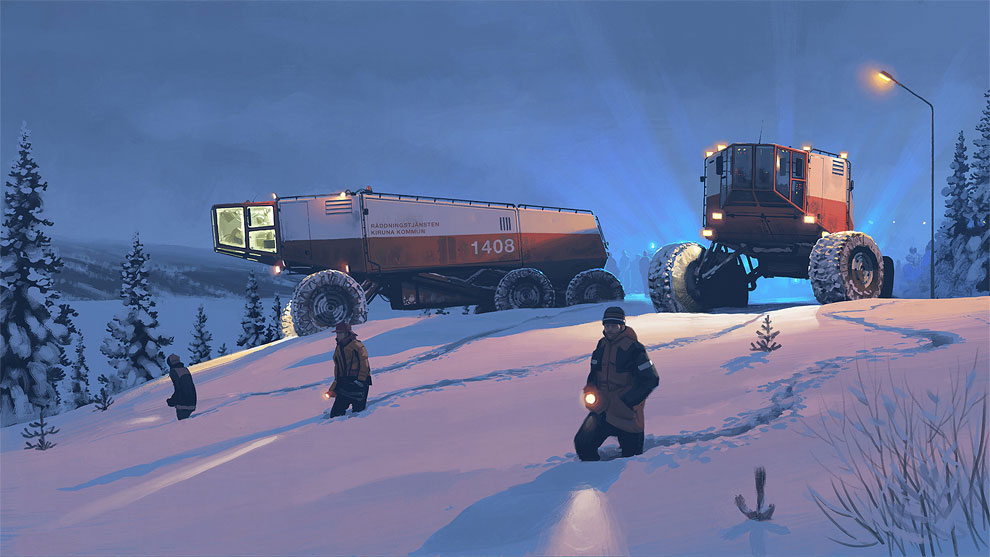
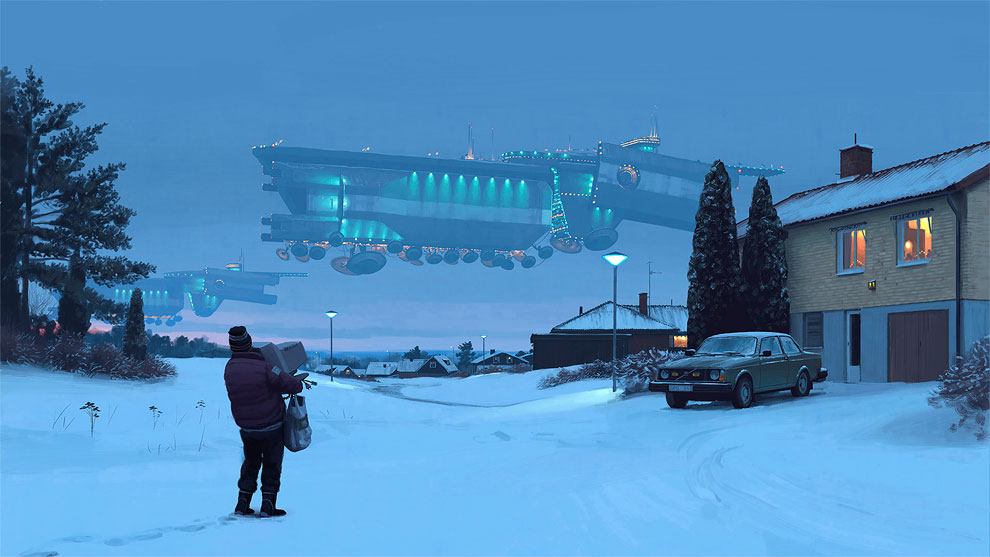
Blackberry Cream Scones

Yield: 8 scones
Ingredients
- 2 cups all-purpose flour
- 3 teaspoons baking powder
- 2 tablespoons granulated sugar
- 1/2 teaspoon salt
- 4 tablespoons butter
- 2 eggs, beaten (reserve 1 tablespoon of egg white for brushing on top)
- 1/3 cup whipping cream
- 1 (16 ounce) can blackberries, well drained
- 2 teaspoons coarse sugar
Instructions
- In a large bowl, stir together flour, baking powder, sugar and salt until thoroughly blended.
- Using a pastry blender, cut in butter until mixture resembles fine crumbs.
- Stir in eggs and cream to make stiff dough. Turn out on a lightly floured board and knead lightly until dough sticks together.
- Divide dough into four parts. Roll each part out to make a circle about 6 inches in diameter and about 1/4 inch thick. Arrange 2 circles on an ungreased baking sheet about 1 inch apart. Spoon 1/2 the berries on each circle leaving about 1 inch all the way around. Cover with the remaining two circles and pinch around the edges to seal in the berries. Score the top of each round into quarters with a knife.
- Brush with the reserved egg white and sprinkle with coarse sugar.
- Bake at 400 degrees F for 20 minutes or until golden brown.
- Serve warm.

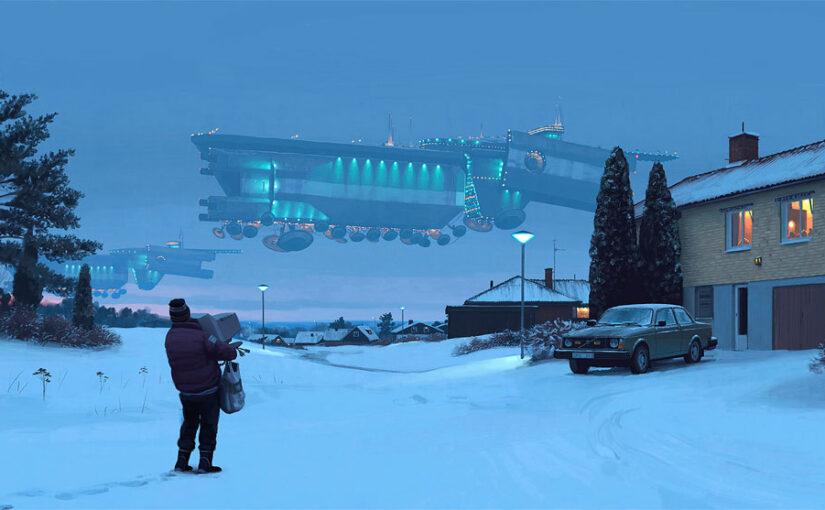

We all make decisions in life that fail in the end to meet our own expectations. But we are still worthy mate, worthy of another crack at least. Now the second sttempts outcome may be what is really templated not the first. Cheers for today’s post MM
Everybody watch the Mickoski video. I just read his last book, exit the cave, it is mind blowing! @Alice in the first 4 mins of the video he talks about an experience similar to yours. I experienced something like his second one, I remember the moment of acceptance and also the weird time after.
Wow!! Lol of all the NDE or DEs that I have listened to – idk if any of them was close to a confirmation as this one that I in fact watched what would have been my death. Thanks WT – I have spent years feeling bat shit crazy about that incident. I guess because I was moving so fast through that experience, that I didn’t have time to truly process what I experienced. Great video.
The Mickoski video is really good.
Everyone here who is very familiar with metallicman’s work has noticed all the similarities they have both discovered.
And i hope his viewers find metallicman
for here they will find answers to a lot of things
that were discussed.
We are damn fortunate to have found this place.